Mysterious Matzah
Rabbi Shmuel Goldin
Pg 22
Our Tefilot Are Never in Vain Page 72
Sivan Rahav-Meir



Mysterious Matzah
Rabbi Shmuel Goldin
Pg 22
Our Tefilot Are Never in Vain Page 72
Sivan Rahav-Meir


With the month of Nissan upon us, we return to the story of our nation’s birth, as Moshe rises to leadership and the exodus again unfolds.
Moshe’s yearly introduction in the text, however, is cause for pause. For some reason, the Torah chooses to introduce the birth of the greatest leader we have ever knownin the most innocuous way possible.
Much excitement has surrounded Emunah Cohen and Neta Lax, the two fresh winners of the annual International Bible Quiz. Yesterday I interviewed them and heard their story.
“And a man went from the House of Levi and he took a daughter of Levi. And the woman conceived and gave birth to a son.”
BY RABBI SHMUEL GOLDIN Faculty, OU Israel Rabbi Emeritus, Congregation Ahavath Torah, Englewood NJParsha that follows (why the information is given at that particular point is the subject of another article).
If the information concerning Moshe’s lineage is eventually shared, why is it left out in the first place?
Numerous commentaries address the issues before us…
the first time?' Yet I simply forgot it. I thought afterwards that HaShem caused me to forget the answer in order to remind me that I do not know everything, that I am human and not perfect."
Working within the realm of pshat, the Ibn Ezra suggests that, at the time of Moshe’s birth, the Israelites lived in many cities in Egypt. Through the phrase, “And a man went,” the Torah is simply informing us that Amram “went” from one Egyptian city to another in order to marry Yocheved.
"The more you learn," Neta said, "the easier it gets. When you learn a lot of Tanach (Bible) you simply see how everything connects to your life. I truly felt that what I learned accompanied me wherever I went. It made my heart feel good."


Questions abound:
Why does the Torah depart from its usual mode of describing an individual’s birth?
What does the seemingly superfluous phrase “and a man went…” indicate?
It turns out that they studied long hours together and were confident they would be the leading competitors. "We planned on winning together," Emunah revealed. "We thought both of us would answer every question correctly so that we would both be champions, tied for first place.
But in the end Emunah won. "They made
Why does the Torah omit any mention of Moshe’s lineage- to the point where even the
Perhaps the Ibn Ezra intends to emphasize that Yosef’s plan for his family’s descent into Egypt has, by this point, broken down. Originally meant to remain separate from the Egyptians in the land of Goshen, the Israelites are assimilating into their surroundings.
In closing, Neta declared: "The two of us will continue to study the Tanach. There were parts of the Tanach that were not in the material covered by the quiz, and it's important for us to learn them too."
And Emunah had this recommendation: "Study the Bible for 5 minutes every day Not for school, not for the Bible quiz, but just for how much fun it will be."
The Ramban, however, takes issue with the Ibn Ezra’s interpretation, arguing that the Torah would have no reason to inform us concerning a journey taken by Amram from one city to another.
Sivan Rahav-Meir is a media personality and lecturer. Married to Yedidya, the mother of
Instead, maintains the Ramban, the verb lalachet, “to go,” is often used in the text
IMPORTANT REMINDERS
See page 46-47 for the special bracha of Birkat Ha-Ilanot recited in Nisan
THIS WEEK'S COVER PHOTO
Photo by Sammy Schaechter
I made Aliya 7.5 years ago and my wife made Aliya 4.5 years ago. We met here in Yerushalayim and our daughter was born here last February. We are blessed and thankful to be able to live in Israel and love how much our daughter loves her “degel”. In her own unique, pure, and 13-month-old way, she inspires us every day
her

All Times According to MyZmanim (20 mins before Sunset in most Cities; 40 mins in Yerushalyim and Petach Tikva; 30 mins in Tzfat and Haifa)
Daf Yomi: Kidushin 69
OU Kashrut NCSY Jewish Action JLIC NJCD / Yachad / Our Way OU West Coast OU Press Synagogue/Community Services OU Advocacy OU Israel
MITCHEL R. AEDER, PRESIDENT OF THE ORTHODOX UNION Yehuda Neuberger, Chairman of the Board, Orthodox Union | Dr. Josh Penn, OU Kashrus Commission
RABBI MOSHE HAUER, EXECUTIVE VICE PRESIDENT | RABBI JOSHUA M. JOSEPH, ED.D.
EXECUTIVE VICE PRESIDENT & CHIEF OPERATING OFFICER Rabbi Dr. Tzvi Hersh Weinreb, Exec. V.P. Emeritus
OU KOSHER: Rabbi Menachem Genack, CEO/Rabbinic Administrator OU Kosher | Rabbi Moshe Elefant, COO/Executive Rabbinic Coordinator ISRAEL: Rabbi Yissachar Dov Krakowski, Rabbinic Administrator | Rabbi Ezra Friedman, The Gustave and Carol Jacobs Center for Kashrut Education/ Deputy Rabbinic Administrator
Headquarters: 40 Rector St. 4th floor, New York, NY 10006 212-563-4000 website: www.ou.org
Ranges 11 days Wed - Shabbat
Ranges 11 days Wednesday - Shabbat
Oct x - x / x - x Cheshvan
April 10 - 20 / 2 - 12 Nisan
Earliest Tallit and Tefillin x:xx - x:xx
Earliest Tallit and Tefillin 5:24 - 5:11
Sunrise x:xx - x:xx
Sunrise 6:16 - 6:04
Sof Zman Kriat Shema x:xx - x:xx
Sof Zman Kriat Shema 9:28 - 9:21
Magen Avraham x:xx - x:xx
Magen Avraham 8:51 - 8:43
Sof Zman Tefila x:xx-x:xx
Sof Zman Tefila 10:32 - 10:27
(According to the Gra and Baal HaTanya)
(According to the Gra and Baal HaTanya) Chatzot (Halachic Noon)
Chatzot (Halachic Noon) x:xx - x:xx
- 12:38
Mincha Gedola (Earliest Mincha) x:xx - x:xx
Plag Mincha x:xx - x:xx
Sunset (Including Elevation) x:xx - x:xx
Seymour J. Abrams • Orthodox Union Jerusalem World Center
• Avrom Silver Jerusalem College for Adults • Wolinetz Family Shul • Makom BaLev • Birthright • Yachad • NCSY in Israel • JLIC in Israel • Camp Dror • Pearl & Harold M. Jacobs ZULA Outreach Center • The Jack Gindi Oraita Program • OU Israel Kashrut
STUART HERSHKOWITZ, PRESIDENT OU ISRAEL
Zvi Sand / Yitzchak Fund: Former Presidents, OU Israel | Rabbi Emanuel Quint z”l, Senior Vice President | Prof. Meni Koslowsky, Vice President
VAAD MEMBERS:
Michael Elman | Yonatan Frankel | Yitzchak Fund | Daniella Hellerstein | Stuart Hershkowitz | Jeremy
Lustman | Meir Raskas | Atara Reichel | Zvi Sand | Norman Schmutter | Mark Schneider | Esther Williams
RABBI AVI BERMAN, EXECUTIVE DIRECTOR, OU ISRAEL
David Katz, CFO, OU Israel | Natan Kandler, COO, OU Israel | Chaim Pelzner, Director of Programs, OU Israel | Rabbi Sam Shor, Director of Programs, OU Israel Center | Rabbi Sholom Gold zt"l, Dean, Avrom Silver Jerusalem College for Adults
22 Keren HaYesod <> POB 1441 <> Jerusalem
9101032
phone: (02) 560 9100 | fax: (02) 561-7432
email: office@ouisrael.org
website: www.ouisrael.org
Founders and initial benefactors of the OU Israel Center: George and Ilse Falk a"h
Torah Tidbits and many of the projects of OU Israel are assisted by grants from THE JERUSALEM MUNICIPALITY
in TT (except, of course, those under OU-Israel hashgacha). Any "promises" made in ads are the sole responsibility of the advertisers and not that of OU Israel, the OU Israel Center , Torah Tidbits.
 RABBI AVI BERMAN Executive Director, OU Israel aberman@ouisrael.org
RABBI AVI BERMAN Executive Director, OU Israel aberman@ouisrael.org
I’m writing this message from Montreal, Canada where I am finishing a wonderful Shabbat weekend being the scholar-in-residence at Tifereth Beth David Jerusalem (TBDJ). While I have been in Canada for Shabbat hundreds of times, this was my first Shabbat in Montreal, so it was really a new and special experience. I got to know the community and their amazing Rabbi, Rabbi Zolly Claman, and his family who welcomed me with such open arms. I got to see how they are all yearning to learn more and more about what their brothers and sisters are going through in Israel. I found out that they have marches here every single Sunday to support Israel. They’re having an event while I am still here focusing on all the hostages and praying for their return. This is really a passionate and Zionistic community. They were also eager to understand what the OU does in Israel, with all of our events and chesed opportunities to help those affected by the war and to create unity in Klal Yisrael at this time. They were also particularly interested in our work with teens in
The OU Israel Family sends heartfelt condolences to Rabbi Glenn Black and family (NCSY Canada) on the passing of his father
RABBI AVI BERMAN Executive Director, OU Israelthe North and South and our youth programming in general. You could see that while they are physically in Montreal, their hearts and minds are in Israel. I want to express my heartfelt thanks to the community, and specifically the families that hosted me, for all they did over this weekend to ensure a successful and inspiring Shabbat for me and everyone else in the community.
The most meaningful part was walking into the shul and seeing, at the very entrance of the shul, a gigantic yizkor sign of all of those who have been killed in this war, with a name and picture of each one. Rabbi Claman told me that within hours of hearing the announcement of soldiers who had been killed that day, they put up their pictures on the wall. Unfortunately, while here we heard the news of four more soldiers who were killed in Gaza. By the time I walked into the shul for shacharit, their pictures were already printed and added. The wall is a reminder of how much Klal Yisrael cares about each other and that we feel each other’s pain. It makes no difference if we know the soldier or not. He is our brother, he is our son, and we are all together.
There is something in the Pesach Haggadah that I have been thinking about a lot since the war started. The seder night is a time of Jewish education. “Vehigadeta levincha” - the Torah tells us to teach the Pesach story to our children, and the story of our history. Last year, when we recited “She-bechol dor va’dor omdim aleinu lechaloteinu,” that in every
generation our enemies have tried to destroy us, we might not have truly understood it, or felt it, fully. But this year, every Jew in the world will say this line with a clear understanding of what our enemies want to do to us. They truly wish lechaloteinu, to wipe us out and destroy us completely.
I have been contemplating how to make this idea practical. What can I do at the seder, what can we do, to not just let the line be stated and then move on? If it’s felt differently this year, we should surely act differently!

The answer came to me last week. Rabbi Ezra Friedman took me, as well as Laya Bejell and Nina Broder, to the Matzot Birkat HaPesach hand matzah factory in Sderot, which is under the hashgacha of the OU. We filmed a behind the scenes video of how matzah is made which we will be releasing next week on our social media channels. While there, I thought about how they had a bomb shelter in the factory. Rockets continue to fall on Sderot, and yet the matzah bakers are here every day to ensure that people will have matzah for Pesach. I said to myself, “Here they stand, many of them having just come back from miluim, and they are devoting themselves to this mitzvah, in Sderot, under rocket fire.”
I made a decision right then that I simply had to have this hand matzah at my Pesach seder. This matzah truly symbolizes how “Hakadosh Baruch Hu matzileinu meyadam.” They tried to destroy, but with G-d’s help, we are saved from their hands and are rebuilding stronger.
We administer another matzah factory in Netivot called Emunah VeBriut. The three
owners were all called to miluim and they hadn’t come back until recently. Because they were fighting to defend Am Yisrael, they produced a lot less matzah this year. Every sale they make will matter to them this year.
The Psagot winery, under OU supervision, will also stand out at my seder. Last week, I wrote about my Purim experience up north with families of evacuees, where we hosted a special Purim seudah for these families. In our planning stages, we knew we needed wine, and my first call was to the Psagot winery, where my good friend Yaakov immediately prepared boxes of wine so we could bring joy and happiness to Klal Yisrael. When I drink this wine at my seder, I will be thinking about how united Klal Yisrael really is, how we care about each other, how we love each other. Ke’ish echad be’lev echad, like one body and one heart, we will overcome any challenges together.
I suggest that anyone who wants to make
May the Torah learned in this issue of Torah Tidbits be for our mother
On her 36th Yahrzeit
Avraham and Yoseph Polak
this Pesach more meaningful seek out food products from companies that symbolize, for you, a meaningful unity, togetherness, and care. Let us show ourselves, and Hakadosh Baruch Hu, how much we are thinking about our soldiers, hostages, and displaced families and how much we are praying for them to come home safely.
We will be talking about the four sons at the Pesach seder. People sometimes mention the fifth son who is not there because he is unaffiliated and estranged from his Judaism. This year, we should think about a sixth son, the one who cannot come home because he is on his base, or in Gaza, or defending a border, or taken hostage. We want so much, as do they, for them to come home and be at their family seders. With Hashem’s help, we should see a seder with the sixth son home and at the table, and we should see peace in Klal Yisrael and Eretz Yisrael.
With that, I want to wish everyone a chag kasher ve’sameach. Let me take the opportunity to remind you of our annual OU Israel Guide to Pesach, with tremendous thanks to Rabbi Ezra Friedman and Rabbi Yissachar Dov Krakowski for working hard to put together this years’ guide. As you can see there, there is a list of the 36 wineries that have the hashgacha of the OU here in Israel. Please make sure to support OU wineries and matzah factories this year, which goes a long way to support the OU in Israel as well.
Wishing you all an uplifting and inspiring Shabbat, Rabbi Avi Berman




A one-of-a-kind historical house, on the outskirts of the city between the American Consulate and the Waldorf Astoria luxury hotel, lies a quiet and pastoral gem wrapped in green and exciting plants in a rural forest in the beating heart of Jerusalem.
5 rooms about 150 meters + 30 meters balcony + built tile space.


Executive Director, OU Israel aberman@ouisrael.org














The world is not a peaceful place right now. War is raging, political polarization in America is growing, and the divisions in Klal Yisrael that we had hoped were behind us have reappeared with a vengeance. Many in Israel have lost their lives, and many more have had their lives upended. Sympathy, support, and respect for Israel have weakened in America and across the globe, and the celebration of Hamas grows stronger on college campuses. It feels as if much of the moral and political progress made by the civilized world is disintegrating before our eyes. This is all profoundly concerning, but it may also present a moment of opportunity.
When we are presented with problems, with structural or moral flaws, our task is to correct them. But there are times when the problems run so deep that we have no choice but to knock it all down and start again. Ironically,
May the Torah learned from this issue of Torah Tidbits be נ”על our beloved father, grandfather, and great grandfather Abe Koslowsky z”l
we may welcome the more complete breakdown as it offers the opportunity to remake rather than to just fiddle and fix. This idea –known in the world of addictions as “hitting rock bottom” – first appears in our Parsha.
The Metzorah is the individual who is struck with leprosy, which usually presents as a small blemish, a discoloration of the skin, and which results in a declaration of tumah, severe ritual impurity. If, however, rather than a localized blemish the person instead experiences the discoloration head to toe, then he is considered pure, kulo hofach lavan, tahor hu, “it is all turned (leprous) white; he is ritually pure” (Vayikra 13:13). While this seems counter-intuitive, Maharal (Netzach Yisrael ch. 35) explained this with “rock-bottom” theory, as the totality of the loss implies that the stage is being set for complete rebirth and renewal.
The Talmud (Sanhedrin 97a) applies the same thinking to the world at large, deriving it from our Parsha:
Rabbi Neḥemya says: During the generation that the Moshiach comes, arrogance will proliferate, and the cost of living will corrupt people leading them to engage in deceit. The vine will produce its fruit and nevertheless wine will be costly. The entire government will be converted to heresy and there will be no inclination among the people to accept rebuke. This supports the opinion of Rabbi Yitzḥak, as Rabbi Yitzḥak says: The Moshiach will not come until the entire kingdom will be converted to heresy. Rava says: What is the



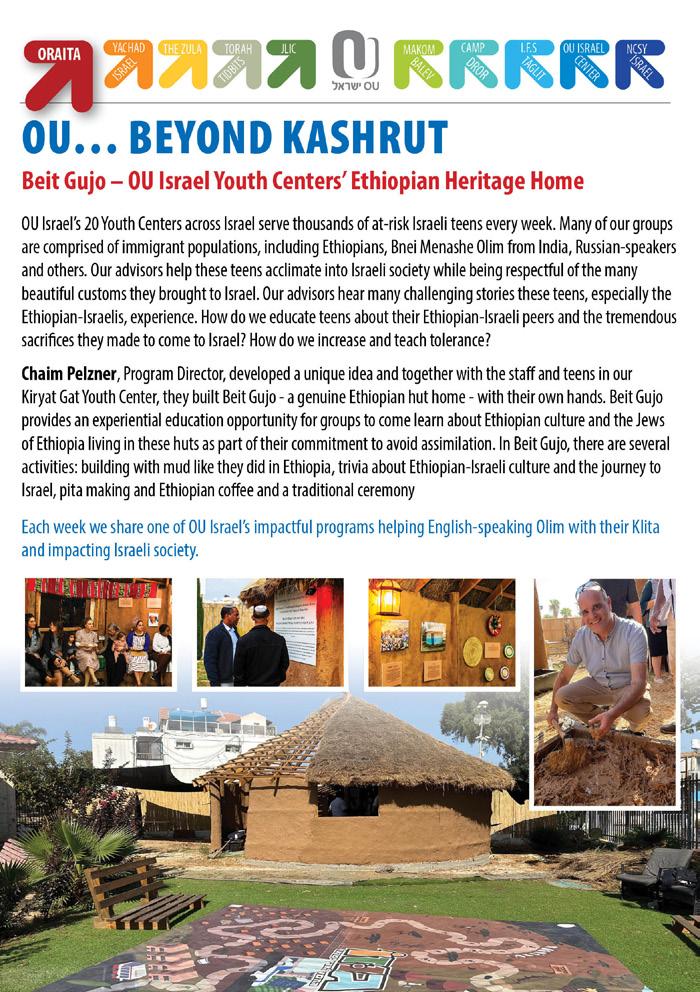
and our next step will be to plant a fruit tree. I never thought of myself as being the agricultural type, but the feeling of settling and planting a portion of Eretz Yisrael, has been truly euphoric. Iy”H, when we plant our tree, and eat the fruits that will grow one day, I think we will be able to truly appreciate that unique Kedusha found in
To conclude, when you buy your Tu B'shvat fruit this year, don’t search for those dried apricots and banana chips imported from Turkey. Rather, head over to the fresh produce and buy yourself some nice juicy Kedusha-filled Jaffa oranges and thank in , imbibing that Kedusha in every bite that


Religious woman health care professional looking for volunteer position to cook healthy and keep company a woman in Jerusalem. In exchange for room and board. References available
Esther Chana Shalom: 053-410-6985

As we prepare for Pesach, we give maos chitim for the poor, so that when the Seder night arrives we know that we can enjoy the special Yom Tov atmosphere knowing that we have provided for the less fortunate than us.

You can send your donations to:
The Clara Hammer Chicken Fund
P.O.B. 18602 Jerusalem 91185 | Tel. 02-582-3477
Donate via PayPal at Chickenladyofjerusalem.com
Or you can pay Hacker's Butcher Shop directly via credit card at Tel. 02-5819378


 RABBI REUVEN TRADBURKS RCA ISRAEL REGION
RABBI REUVEN TRADBURKS RCA ISRAEL REGION
The next 2 parshiot, Tazria and Metzora are challenging. Their theme is simple: one who is Tamei, ritually impure may not enter the Mikdash. There are a number of situations that render a person Tamei. The removal of the Tuma status allows re-entry to the Mikdash. Who becomes Tamei and how to remove the Tuma is outlined.
The idea that entry to the holiest place should have special rules makes sense. The challenge lies in why these specific people are Tamei and cannot enter. And more specifically, why a person with tzaraat, a kind of leprosy, should be restricted. But let’s at least try to offer some approach to understanding why these people become Tamei. And why they are restricted from entering the Mikdash.
I will propose an approach and attempt to trace it through the aliyot. I think this approach has merit as a perspective though it does not answer all the details and complexity of the laws.
The Mikdash is the place of the rendezvous of man and G-d. The notion of finite man encountering the Infinite is frightening and humbling. But it is also grand. If He is inviting us to meet Him in His Home – well, He must think of us as worthy to meet. Wow. Man is His worthy partner. For man is created in His Image. Man is majestic. Noble. Elevated. Distinguished. Unique. G-d invites
majestic, noble man to His home, the Mikdash, the place of the meeting of the Infinite with man.
However, while He thinks of us as majestic, life sometimes causes us to feel less than majestic. Circumstances can cause us to lose a sense of our nobility. We can feel ordinary and not elevated, rather pedestrian. And in particular, our nobility is bruised by the things we share with animals: food, procreation, illness, death. When confronted with our bodies, the physicality we share with animals, our mortality, we can lose the nobility of our station. We can feel like glorious animals.
Perhaps this may be the meaning of tuma. The tuma in our parsha is what is called tuma whose source is our own body: childbirth, Tzaraat (loosely translated as leprosy), and emissions from procreative organs. These very earthy parts of our being can damage our sense of nobility, making us feel closer to animals than to angels.
Man in his nobility is invited to approach G-d: man, when doubting his nobility needs to be restored before approaching G-d. The Tamei person is one with bruised nobility. The process of becoming Tahor is the process of reclaiming our nobility. Human nobility is required to rendezvous with the Divine in His home.
Childbirth renders a woman tamei (tmeya). A male child is
circumcised at 8 days. At the end of the tuma, 40 days for a male, 80 days for a female child, the new mother immerses and brings an offering of an olah and a chatat. She may then enter the Mikdash. Tzaraat: a patch of white skin may be tzaraat. A Kohen examines it to see if it is the requisite white and if the hairs on that skin are white. If so, the person is declared a Metzorah. If the signs are not the requisite, the person is quarantined for a week. The quarantine can be extended a second week.
Childbirth is joyous. Yet, the woman becomes tmeya, restricting her entry to the Mikdash. Along the theme mentioned above, experiences that we share with animals bruise our sense of the nobility of being human. Childbirth, though wonderful, is earthy. The wonder of birth may be overshadowed by oppressive feelings of the physicality of birth and the early stage of child-care. To recapture the higher nobility of motherhood, the woman brings offerings, as a reboot, a reaffirmation of the higher calling of creating this new life.
The Kohen examines the skin following the 2 weeks of quarantine, and if it has not spread, the person is able to immerse and become tahor. If it spread, the tuma continues. If the white patch on the skin, with white hair, has healthy skin in its midst, it is tamei. If it covers the entire body, he is tahor. When healthy skin returns, he is tamei. The Kohen declares the tamei or tahor status of the tzaraat.
Tzaraat has many details. It appears as unusual colorations of the skin. The skin is the visible part of our bodies. In fact, if the tzaraat skin discoloration is on a part of the
body that the Kohen is unable to see, it is not tzaraat. It needs to be visible.
Visible skin blemishes are embarrassing. One manner in which mankind is distinct from animals is in our social nature. Being self conscious of our appearance bruises our social nature; we’d rather not be seen in public. This damage to our sense of nobility also demands a reboot in the form of a ceremony at the conclusion of the tzaraat, outlined in next week’s parsha.
3RD ALIYA (13:18-23)
White skin with white hairs that is found in skin recovering from a wound is tamei. If the Kohen does not find the requisite color or hair, the person is quarantined for 7 days. If it spreads, he is tamei. If not, he is tahor.
All the details of tzaraat are contained in one long chapter. However, the aliya breaks are deliberate. Aliyot 2, 3, 4, and 5 all end on verses declaring the person tahor.
When we have an opportunity in life to be positive, let’s land on that, not a verse that declares the person tamei. Interesting that we often do the opposite: we will compliment a person and then launch into criticism. How about trying the reverse? Let the last thing said be positive, the compliments. Never land on the tamei; only the tahor.
4TH ALIYA (13:24-28)
Tzaraat can also be found on skin that suffered a burn. The Kohen assesses the nature of the discoloration determining whether it requires 7-day quarantine and reassessment to determine if tamei or tahor.
There are normal skin conditions that are not tamei – a wound or a burn or boils. Tzaraat occurs when those conditions have
skin abnormalities in their healing.
5TH ALIYA (13:29-39)
Tzaraat can also appear on the head or beard, with hair loss and skin discoloration. The Kohen assesses the spread of the discoloration to determine if it requires quarantine and if it is tamei.
The list of locations of tzaraat concludes with the head, the most visible and hence self-conscious location for the tzaraat.
6TH ALIYA (13:40-54)
When a person is declared to have tzaraat, he rends his garments, lets his hair grow, covers himself to his lips and dwells outside of the camp. Garments displaying specific discoloration are deemed to have garment tzaraat. The Kohen assesses the color and shape, quarantining if necessary.
After the detailed description of when a person has tzaraat and when not, the consequence of tzaraat is described. The person acts as a mourner would act: garment torn, hair grows, covered head (a practice we no longer generally observe as mourners). But more dramatically: he is sequestered out of the populated area.
This isolation prompts the midrashic comment that tzaraat is for lashon hara –the punishment fits the transgression. If you can’t treat people respectfully, then spend some time alone.
Or, in line with my approach outlined above: proximity to G-d demands that we display the nobility of man. Tzaraat is an embarrassing discoloration, in a place of the body that everyone can see. It makes us feel self-conscious, diminishing our sense of self. Isolation allows us to reflect
on our self worth. Self worth has nothing to do with how we look to others, whether our skin looks good or whether our dress looks fine. Self worth is intrinsic; we have self worth simply because we are created in the image of G-d. Isolation engenders those feelings; there is no one to impress, no one with whom to interact. Save One.
If determined to have tzaraat, the garment is burned. The regulations of tuma of garments are completed.
Clothing too is uniquely human. Animals do not wear clothes. Clothing is an expression of human dignity. The tumah of a garment restricts the wearer from entry to the Mikdash; human dignity is diminished by this oddly blemished garment.
The theory we offered in this parsha is that tuma and tahara restrict people from entering the Mikdash, as they are moments when human dignity and uniqueness are sullied. G-d invites majestic man of dignity to the Mikdash. While we share aspects of life with animals - food, procreation, illness and death – we are oh so much more glorious than animals. And the uniqueness of man is displayed in the fullness of his social interactions and in the dignity of his clothing, both absent from the animal world (the social nature of some animals does not reach the richness of human society with its communication and robust and sophisticated structure of cities, business and education). The majesty of the invitation to man to rendezvous with G-d in the Mikdash demands the fullest dignity and majesty of man. When that dignity is bruised by confrontation with our earthy, animal nature, or by injury to the dignity
of our uniqueness in society and clothing, we need to reaffirm our majesty through purification and offerings. That perhaps can give meaning to the laws of tuma and tahara.
MELACHIM BET 4:42-5:19
This week’s haftorah describes how a prophet miraculously cured an Aramite general of his tzara’at ailment. The haftorah begins with a brief mention of one of the prophet Elisha’s miraculous feats. He received a paltry gift of twenty loaves of bread and a sack of grain. At Elisha’s insistence, this gift was shared amongst his hundred students. The food was enough for all—and there were even leftovers.
Naaman, general of the powerful Aramite armies, contracted tzara’at. A young captive Israelite maid advised him to seek the assistance of the “prophet in Samaria.” Acting on this suggestion, the king of Aram dispatched a message to the king of Israel, “Behold I have sent Naaman my servant to you, and you shall cure him of his tzara’at!”
The king of Israel panicked, until Elisha sent him a message: “Why have you rent your garments? Let him come to me now, and let him know that there is a prophet in Israel!”
Elisha advised Naaman to immerse in the Jordan River. Despite his initial reluctance to do so, Naaman carried out the prophet’s orders, and was immediately healed.
Elisha refused to accept any gifts from Naaman. The general promised Elisha that he would no longer serve any deity other than the One G-d, and he departed.
27th of 54 sedras; 4th of 10 in Vayikra.
128 lines in a Sefer Torah, rank: 48th.
9 Parshiyot, 5 open, 4 closed.
67 pesukim - ranks 48th (8th in Vayikra).
1010 words - 48th (8th in Vayikra).
3667 letters - 48th (8th in Vayikra).
9 mitzvot; 7 positive; 2 prohibitions.
BY RABBI CHANOCH YERESR av, Beit Knesset Beit Yisrael, Yemin Moshe
)ב:בי( םימי תעבש האמטו רכז הדליו עירזת יכ השא
“If a woman conceives and gives birth to a boy, she shall be ritually unclean for seven days” (12:2)
After reading last week’s parsha, Parshat Shemini, which dealt with the impurity and purity amongst animals, this week’s parsha will deal with impurity and purity amongst people.
Why does the Torah discuss these issues with animals prior to discussing these issues with man?
The Ktav Sofer (Rabbi Avraham Shmuel Sofer 1815-1871) answers that mankind, in principle is weaker and more vulnerable physically than any other living creature. Animals in the wild can obtain food without toil and preparations. Man, on the other hand, must work for his food and needed clothing. On a different perspective, man is on a higher level, being entrusted to serve G-d. This special relationship is only retained as long as man remains worthy to fulfill the ways of the Divine.
Once man squanders this spiritual level, he regresses to being lower than all other creatures in this world. As quoted in the Midrash Vayikra Rabbah: “If man is worthy of it, they shall say of him: You come before all the works of creation. But if he is not worthy, they shall say of him: even the gnat comes before you.”
- Shabbat Shalom




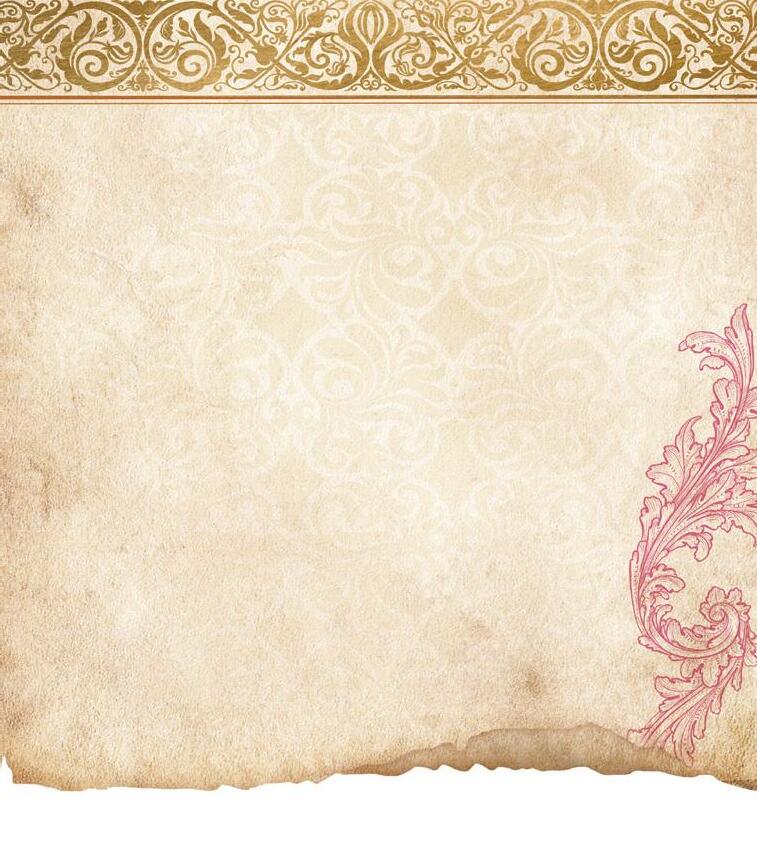
This Passover, donate to the Efrat Association, which helps thousands of women every year give birth to their child out of choice, with guidance and social, emotional, and financial support.

Have you ever been asked the question, “What is your earliest memory?”
I have been asked that question many times. There was a time, long ago, when I was a graduate student in psychology, when that question was posed. The answer was considered very revealing of the respondent’s deeper psyche.
Such exceptionally early memories were known in psychoanalytic circles as “screen memories” and were considered quite significant diagnostically. The scientific significance of such memories is now considered to have no basis, but they are certainly interesting and make for great conversation.
Considering the question posed, I had a clear image of my first memory. I was standing outside a brick building, looking up at my father, may he rest in peace, surrounded by
9 Shalom Yehuda St. Jerusalem
Three rooms completely accessible elevator, 65 sqm, storage, parking, 3rd floor, small building, close to a synagogue, public transportation and shops. Attractive price 2.800.00 nis
Nissim Cohen
0522741181 | cnissim5@gmail.com
a small crowd of other men. Everyone was looking at the moon.
This may have been my first experience, at age three or four, of Kiddush Levana, the monthly ceremony during which the congregation exits the synagogue and acknowledges the first appearance of the new moon.
I have another memory of the religious significance of this ceremony. I remember being told that the Hebrew word for “month” is “ chodesh ” and the Hebrew word for “new” is “chadash.” It was then that I learned of the significance of the new moon which commences a new month, and became aware for the first time that the Jewish people follow the lunar, not solar, calendar.
The theme of newness and the constant potential for renewal is a central theme this time of year. It is also the central theme in the Jewish calendar, and, one might say, in Jewish tradition in general. The symbolism of the moon constantly renewing itself is coupled this week with the symbolism of springtime and nature’s renewal.
Pesach has a myriad of symbolic meanings, one of which is the perennial opportunity for personal and national rejuvenation.
When I focus on my earliest memory with extra effort, I remember what the men who surrounded me under that moon so long ago were saying to each other. Each man addressed three others with the traditional Jewish greeting, “Shalom aleichem.” I remember being puzzled
by why Daddy was greeting friends that he saw daily with this special welcome, generally reserved for those whom one hadn’t seen in a while.
I didn’t ask him about it then; after all, it was still the era when “children were to be seen and not heard”. But I have since answered the question for myself, and have explained it to my children and to my students as follows:
“The new moon is a symbol for renewal. It is a time for each of us personally to begin again, to forget past mistakes, to ‘turn over a new leaf’. It is also a time for us to renew and recharge our relationship with others. It is a time to begin a new slate, to forgive each other, and to appreciate each other anew. Hence, we greet at least three friends, even old friends, with a ‘Shalom aleichem,’ as if they were newcomers in our lives.”
This week’s Torah portion of Tazria begins, “Speak to the children of Israel, saying: ‘If a woman conceives and bears a male child, she shall be unclean seven days...and on the eighth day, the flesh of his foreskin shall be circumcised.’” (Leviticus 12:1-3) The opening theme this week is also one of a new beginning, of the birth of a new baby. It is a time for the celebration of the entry of a new member into the Jewish people.
It is at this point that you, dear reader, might well ask, “If we are celebrating not just newness in general, but the arrival of a new human being into this world and of a new member of the Jewish faith, then why does the mother enter the realm of tumah, ritual uncleanness? Should she not, rather, enter the realm of kedushah v’taharah, sanctity and cleanness?”
I found a most thought-provoking answer




to this oft-asked question recorded in the name of that most profound of the Chassidic masters, Rabbi Mendel of Kotzk. He cites the passage in the Talmud which states that the “keys of childbirth” are kept by the Almighty Himself. It is He who presides, as it were, over “labor and delivery.” Once the baby is born, His Presence departs as well. Just as when the soul of man departs, tumah descends, so too when the Divine Spirit departs, tumah ensues.
The Kotzker once again teaches a very deep, albeit existentially pessimistic, lesson. Perhaps one must be Rabbi Mendel of Kotzk to truly understand why he forces us to face
darkness even at the moment of joyous celebration of birth.
For most of us, on the other hand, this week’s lesson is of light, and not of darkness. It is an occasion to contemplate all that is new in our natural and interpersonal environments, especially at this time of year. It is an opportunity to seize the moment by taking advantage of the constantly available potential for renewal of ourselves and of our friendships and relationships.
Is this just a Jewish message? Of course not. It is a message for all of humanity. And it is so well expressed by the famous adventurer and explorer of the sea, Jacques-Yves Cousteau, in his book The Silent World, when he writes:
“Sometimes we are lucky enough to know that our lives have been changed, to discard the old, embrace the new, and run headlong down an immutable course. It happened to me at Le Mourillon on that summer’s day, when my eyes were opened to the sea.”
This Shabbat, may our eyes open to a different kind of sea. May we embrace the new and run, headlong and happy, down a different and better course.
Yosef Ezriel ben Chaya Michal
Chana bat Bruriah
Benzion Simcha Mendel Ben Chana Rachel
Feyge Sara bas Chaya Peshe
Nechama Charna bat Feigel
Leah Naomi bat Tova
Pesach ben Sarah Frieda




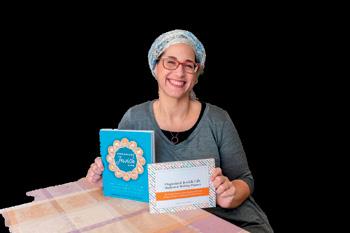

Matzah is mysterious…
This symbol is discussed twice over the course of the Seder. The two references, however, could not be more different.
With the month of Nissan upon us, we return to the story of our nation’s birth, as Moshe rises to leadership and the exodus again unfolds.
In the opening paragraph of Maggid (the Seder’s discussion of the Pesach story) matzah is referred to as lachma anya, the “bread of affliction” or “a poor man’s bread” – clearly a symbol of bondage and suffering.
BY RABBI SHMUEL GOLDIN Faculty, OU Israel Rabbi Emeritus, Congregation Ahavath Torah, Englewood NJParsha that follows (why the information is given at that particular point is the subject of another article).
“And they baked the dough that they had brought out of Egypt into unleavened cakes, for it had not fermented.”
If the information concerning Moshe’s lineage is eventually shared, why is it left out in the first place?
Numerous commentaries address the issues before us…
On the other hand, almost unnoticed, the Torah also testifies to the existence of matzah as a symbol prior to the moment of the Exodus. God’s commandments concerning the Korban Pesach in Egypt include the following:
Moshe’s yearly introduction in the text, however, is cause for pause. For some reason, the Torah chooses to introduce the birth of the greatest leader we have ever knownin the most innocuous way possible.
As Maggid draws to a close, however, matzah becomes synonymous with redemption:
Working within the realm of pshat, the Ibn Ezra suggests that, at the time of Moshe’s birth, the Israelites lived in many cities in Egypt. Through the phrase, “And a man went,” the Torah is simply informing us that Amram “went” from one Egyptian city to another in order to marry Yocheved.
“And they shall eat that flesh on that night, roasted over the fire, and matzot; with bitter herbs shall they eat it.” If the symbol of matzah is born only at the moment of the Exodus, as a result of the haste characterizing the Israelites’ departure, how can matzah already be in existence as a symbol before that moment of redemption arrives?
“And a man went from the House of Levi and he took a daughter of Levi. And the woman conceived and gave birth to a son.”
Questions abound:
“This matzah that we eat – for what reason [do we do so]? It is because the dough of our forefathers did not have time to become leavened before the King of kings, the Holy One, Blessed Be He, revealed Himself to them and redeemed them…”
Why does the Torah depart from its usual mode of describing an individual’s birth?
Which is it? Is matzah a symbol of slavery or a symbol of freedom?
What does the seemingly superfluous phrase “and a man went…” indicate?
This contradictory nature of matzah, highlighted in the Haggadah, is actually first evidenced much earlier, in the Torah text itself.
Why does the Torah omit any mention of Moshe’s lineage- to the point where even the names of his parents are deliberately omitted?
Perhaps the Ibn Ezra intends to emphasize that Yosef’s plan for his family’s descent into Egypt has, by this point, broken down. Originally meant to remain separate from the Egyptians in the land of Goshen, the Israelites are assimilating into their surroundings.
It would seem that, unlike other static Seder rituals, the symbol of matzah is dynamic. While other symbols at the Seder represent either slavery or freedom, somehow matzah represents both.
The Ramban, however, takes issue with the Ibn Ezra’s interpretation, arguing that the Torah would have no reason to inform us concerning a journey taken by Amram from one city to another.
But how can one substance simultaneously represent such vastly different states as slavery and freedom? What is the secret of the matzah?
Perhaps the answer is hinted at in another curious aspect of matzah…
On the one hand, the Torah twice testifies to the popularly accepted notion that matzah originates due to the speed of the Israelites’ departure from Egypt:
Above all, is this any way to introduce a hero?
Compounding these questions is the fact that the omitted information concerning Moshe’s lineage is ultimately included in the
“And the people took up their dough before it became leavened;”
Instead, maintains the Ramban, the verb lalachet, “to go,” is often used in the text when a new and difficult step is about to be taken. By stating, Veyeilech ish, “And a man went,” the Torah underscores Amram’s courageous willingness to marry in spite of Pharaoh’s harsh decrees.
The Ramban’s approach connects to a
The festival of Pesach is largely shaped by the antithetical relationship between matzah and its opposite, chametz (leavened bread). Hours and hours of preparation are spent to ensure that, by the time the festival begins, our personal worlds are chametz-free. Eating, benefiting from, or even owning chametz on
Pesach are biblically prohibited.
In order to enter the realm of matzah, we must completely leave the realm of chametz. Matzah and chametz simply cannot coexist.
And yet, these two “opposites” are remarkably alike. Their ingredients are, in fact, identical. The Talmud goes so far as to say that the only flour acceptable for the production of matzah is flour that has the potential to become chametz. Other authorities suggest that even the Hebrew terms chametz and matzah themselves reflect the fundamental similarity of the items they represent. matzah is spelled mem, tzadik, heh, while chametz is spelled chet, mem, tzadik. These terms are thus distinguished from each other by the variable of one letter alone. Furthermore, the differentiating letters heh and chet are themselves only separated by a tiny line which, when attached to the leg of a heh, turns that letter into a chet. This seemingly insignificant line, these scholars maintain, represents the small yet critical factor that separates the realms of chametz and matzah.
That single factor? A split second of time. A mixture of flour and water that remains untended for over eighteen minutes automatically becomes chametz. If we catch and bake that mixture within eighteen minutes or less, we have created matzah.
Here then, is a possible global approach to the mystery of matzah.
Just as matzah is defined physically by a split second of time, matzah philosophically represents a split second of time. Matzah captures the moment when everything changes. It is the moment of transition from slavery to freedom. By freezing this moment in time, this symbol alone is able to reflect elements
of both slavery and freedom.
Once a year, we enter the realm of matzah, a realm wholly defined by a moment of time. We do so not only to capture the transitional instant that launched our national history, but to remind ourselves that life is never static. The line separating “opposites” in our lives is often razor thin. Every moment of our lives can be a transitional moment – moving forward or, if we are not careful, slipping back.
Rabbi Goldin is the author of the OU Press volumes "Unlocking the Torah Text," and "Unlocking the Haggada."




It was the Septuagint, the early Greek translation of the Hebrew Bible, that translated tsara’at, the condition whose identification and cleansing occupies much of Tazria and Metzora as “lepra”, giving rise to a long tradition identifying it with leprosy.
That tradition is now widely acknowledged to be incorrect. First, the condition described in the Torah simply does not fit the symptoms of leprosy. Second, the Torah applies it not only to various skin conditions but also to mildew on clothes and the walls of houses, which certainly rules out any known disease. The Rambam puts it best:
Seeking to identify the nature of the phenomenon, the Sages sought for clues elsewhere in the Torah and found them readily available. Miriam was smitten by tsara’at for speaking badly about her brother Moses (Num. 12:10). The Torah later gives special emphasis to this event, seeing in it a warning for all generations:
“Be careful with regard to the plague of tsara’at . . . Remember what the Lord your God did to Miriam along the way after you came out of Egypt.”(Deut. 24:8-9)
It was, in other words, no normal phenomenon but a specific Divine punishment for lashon hara, evil speech. The Rabbis drew attention to the verbal similarity between metzora, a person afflicted by the condition, and motzi shem ra, someone guilty of slander.
Rambam, on the basis of rabbinic traditions, gives a brilliant account of why tsara’at afflicted both inanimate objects like walls and clothes, and human beings:
It [tsara’at] was a sign and wonder among the Israelites to warn them against slanderous speaking. For if a man uttered slander, the walls of his house would suffer a change. If he repented, the house would again become clean. But if he continued in his wickedness
“Tsara’at is a comprehensive term covering a number of dissimilar conditions. Thus whiteness in a person’s skin is called tsara’at. The falling off of some of his hair on the head or the chin is called tsara’at. A change of colour in garments or in houses is called tsara’at.”(Hilchot Tumat Tsara’at 16:10)
until the house was torn down, leather objects in his house on which he sat or lay would suffer a change. If he repented they would again become clean. But if he continued in his wickedness until they were burned, the garments which he wore would suffer a change. If he repented they would again become clean. But if he continued in his wickedness until they were burned, his skin would suffer a change and he would become infected by tsara’at and be set apart and alone until he no more engaged in the conversation of the wicked which is scoffing and slander. (Hilchot Tumat Tsara’at 16:10)
The most compelling illustration of what the tradition is speaking about when it talks of the gravity of motsi shem ra, slander, and lashon hara, evil speech, is Shakespeare’s tragedy Othello. Iago, a high-ranking soldier, is bitterly resentful of Othello, a Moorish general in the army of Venice. Othello has promoted a younger man, Cassio, over the more experienced Iago, who is determined to take revenge. He does so in a prolonged and vicious campaign, which involves among other things tricking Othello into the suspicion that his wife, Desdemona, is having an adulterous affair with Cassio. Othello asks Iago to kill Cassio, and he himself kills Desdemona, smothering her in her bed. Emilia, Iago’s wife and Desdemona’s attendant, discovers her mistress dead and as Othello explains why he has killed her, realises the nature of her husband’s plot and exposes it. Othello, in guilt and grief, commits suicide, while Iago is arrested and taken to be tortured and possibly executed.
It is a play entirely about the evil of slander and suspicion, and portrays literally what the Sages said figuratively:
“Evil speech kills three people: the one who says it, the one who listens to it, and the one


Jerusalem Real Estate is My Business Eta: 054-723-3863
Amazing stand alone homes in OLD KATAMON, TALBIYA, BAKA, GERMAN COLONY
In OLD KATAMON 220 sqm plus 80 sqm of outdoor space. For renovation, pkg & storage. Includes separate unit. 8,999,000 NIS
In GERMAN COLONY. 300 sqm plus 170 sqm registered garden. Plus parking and roof top terrace. Price: 18,000,000 NIS
ARNONA exclusive:
Fantastic cottage for sale, registered at 182 sqm plus ground floor unit (can be granny flat). Parking. Built on 3 levels with large terrace on 2nd floor. 5 bedrooms!!! Perfect for a young family. Price 7,300,000 NIS
In BAKA, 236 sqm on two floors, plus 80 sqm of outdoor space, high ceilings, authentic Jerusalem bldg with modern addition. 4 bedrooms, office/ or sitting room. Master suite on entrance level. Parking & storage. Price: 15,950,0000
BAKA Two story penthouse
200 sqm. Light open space
kitchen & living room, sukkah terrace. Elevator, balconies, 2 parking, elevator, storage room. 12,500,000 NIS
GERMAN COLONY/TALBIYA
400 sqm on one floor, parking, storage, large sukka terrace





Eta Morris Realty, Ltd.
etamorrisrealestate@gmail.com
Eta: 054-723-3863
etamorrisrealty.co.il
about whom it is said.” (Arachin 15b)
Shakespeare’s tragedy makes it painfully clear how much evil speech lives in the dark corners of suspicion. Had the others known what Iago was saying to stir up fear and distrust, the facts might have become known and the tragedy averted. As it was, he was able to mislead the various characters, playing on their emotional weaknesses, distrust and envy, getting each to believe the worst about one another. It ends in serial bloodshed and disaster.
Hence the poetic justice Jewish tradition attributes to one of the least poetic of biblical passages, the laws relating to skin diseases and mildew. The slanderer spreads his lies in private, but his evil is exposed in public. First the walls of his house proclaim his sin, then the leather objects on which he sits, then his clothes, and eventually his skin itself. He is condemned to the humiliation of isolation:

‘Unclean! Unclean!’ he must call out . . . Since he is unclean, he must remain alone, and his place shall be outside the camp. (Lev. 13:45-46)
Said the Rabbis: Because his words separated husband from wife and brother from brother, his punishment is that he is separated from human contact and made an outcast from society (Arachin 16b).
At its highest, WikiLeaks aims at being today’s functional equivalent of the law of the metzora: an attempt to make public the discreditable things people do and say in private. The Sages said about evil speech that it was as bad as idolatry, incest, and murder combined, and it was Shakespeare’s genius to show us one dramatic way in which it can contaminate human relationships, turning people against one another with tragic consequences.
Never say or do in private what you would be ashamed to read about on the front page of tomorrow’s newspapers. That is the basic theme of the law of tsara’at, updated to today.
These weekly teachings from Rabbi Sacks zt”l are part of his ‘Covenant & Conversation’ series on the weekly Torah teaching. With thanks to the Schimmel Family for their generous sponsorship, dedicated in loving memory of Harry (Chaim) Schimmel. Visit www.RabbiSacks.org for more.
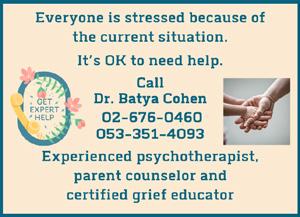



Do you have a life insurance policy you:
• No longer want?
• No longer need?
• Can no longer afford the premium?
• Could you use extra money instead of keeping your policy?
I can guarantee that if you qualify with the underwriting process I can get you more money than if you cash it in with the company.
Please contact Moshe Russell at: Buymypolicy32@gmail.com
Your place for extra space
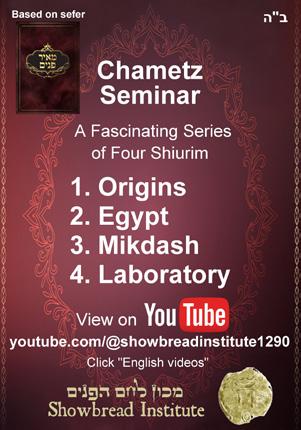
YESH EZRA – We are there when most needed!

• Providing provisions for displaced families
• Assisting the poor for Pesach
• Acquiring special medicines and equipment for the sick
• Sending care packages to our brave soldiers
• Celebrating a Bar Mitzva with a needy family
• Advancing therapy for distressed individuals
• Visiting families whose fathers and sons are in the IDF
Pesach is around the corner. Please donate generously and further assist us in raising funds for our forthcoming social worker.
See our updated website: www.yeshezra.org INQUIRIES: Menachem Persoff - 050-570-1067
Bank Transfer: Mercantile (17), Branch 642, A/C 79747843
Send Asmachta for tax receipt
Checks:
“Yesh Ezra,” POB 31476, Romema, Jerusalem
Credit Card: Sara – 077-820-0196.
Sun/Mon/Wed (10:15am-2.45 pm)


JERUSALEM SALES
NEW PROJECTS - Excellent Opportunities
Desirable Neighborhoods - Call For Information
SHAAREI CHESSED / RECHAVIA
*Duplex! 5 bdrms, 25 sqm kitchen, succah, shabbat elevator, 2 parking, storage.
*New 228 sqm duplex penthouse, 30 sqm succah, shabbat elevator, parking, view
TALBIEH - On Private Land
* Exceptional boutique building with 3 apartments on 900 sqm lot
*New 250 sqm + 200 sqm garden
NACHLAOT
2 rms, priv entr, storage room, NIS 2,190,000
OLD KATAMON
*Renovated 3 bdrm, ensuite MB, succah, low floor
*160 sqm 4 bdrms, garden, storage, parking
HAR NOF
Centrally Located– 10 room duplex with 400 sqm garden (room for a pool), excellent condition
MEKOR CHAIM - NEW PROJECT
126 sqm, spacious 4 bdrms, succah, 3 exposures, 2 parking, storage. Close to Baka & G. Colony Eiferman Properties
FOR MANY MORE PROPERTIES:
02-651-4030

PROFESSIONAL GLUING for all your loose & shaky wood furniture
Going above and beyond - Honest Anglo Customer Service
We import the highest quality products for the best results Massive 5-year warranty on all our gluing
Thousands of Satisfied Customers
Servicing MOST of the Country TRUSTED FURNITURE REPAIR FOR OVER 125 YEARS MOST




This year, we have the privilege of reading the haftarah earmarked only for Parashat Tazria - a somewhat rare occurrence, as this parasha is generally read together with Parashat Metzora when the haftarah of that parasha is read. In fact, given that this parasha is usually paired with the special maftir readings that precede Pesach (or with Shabbat Rosh Chodesh or “Machar Chodesh”), the last time we read this haftarah was actually ten years ago!
The selection, found in Sefer M’lachim Bet (4:42- 5:19) tells the story of the tzara’at that infected Na’aman, the commander of the armies of Aram, who was the northern nemesis of Israel. The story, therefore, creates a clear connection to our parasha that deals, primarily, with that very subject. However, as R. Yehuda Shavit points out, there is a basic difference between these two sources. The haftarah story focuses

upon Na’aman’s need to be cured from his sickness; the Aramean general simply hopes to rid himself of the debilitating ailment. As a result, as one of those who regard the illness as a normal manifestation of the natural world, he searches to find a cure for the solution in nature. But after time when he realizes that he cannot be cured with any of the usual medications, he, reluctantly, looks for the solution in the “supernatural”. And this explains why Na’aman listens to the advice of his simple Israelite captive who advises him to go to the prophet in Shomron who, she declares, would certainly cure him. The Aramean general even convinces his King of Aram - a nation that had hegemony over Israel and that generally regarded the Israelites with disdain – to send him to Israel the and demand of the King that he heal Na’aman (“Va’asafto mitzor’ato”).
In contrast to the episode we read in our haftarah, our parasha gives no medical advice as to HOW to heal a person from the tzara’at. Instead, it tells those afflicted with Tzara’at what they must do after the contagion - how they are to rend their garments, let their hair grow and conceal their eyes and nose (v. 13; 45). It does NOT teach us how to treat the illness. Rather, the Torah demands this public display - even requiring the Tzaru’a [the infected one] to publicly call out “Tameh, Tameh” - for it sees the affliction as being a result of a spiritual 29th
been memorialized in a popular song, "An eternal people does not fear the long and arduous path."
Doris Weinberger a"h ולסכ 'ד -ה"ע המלש לאקזחי תב האל הרובד
Max Weinberger z”l
ולסכ ז"כ -ל"ז בד ןב ךלמילא
Greatly missed by their children, grandchildren and great grandchildren
Rav Aryeh and Dvora Weinberger
Bernie and Leah Weinberger
Menachem and Hannah Katten
failure. As such, the “cure” could be brought about by having the afflicted one recognize his shortcoming through public admission which would lead to his repentance. And, ultimately, THAT is the Torah’s “cure”, i.e., purification….. through contrition and atonement. So, while Na’aman concentrated on a medication FOR the disease, the Torah focusses on a purification – which would lead to protection FROM the disease.
Patience is necessary for those who follow Isaac's way. But a wise woman taught us that patience is but another name for hope. That woman was Jane Austen, who put these words into the mouth of one of the characters in her great novel, Sense and Sensibility: "Know your own happiness. You want nothing but patience—or give it a more fascinating name: call it hope."
In observance of the Shloshim of our friend
Yehuda Leib Berren z"l
Rav Menachem Weinberg will give a shiur in his memory "Heroic Joy"
Monday evening, 23 November/ 8 Kislev
7:30pm
Zoom Meeting: 853 8980 1519
Password: Yehuda
It is for this reason that the Torah’s aggrieved victim turns to the Kohen for relief, as he is the one who serves in the Mikdash and sacrifices the sin offerings. Na’aman, on the other hand, one who considered his ailment a normal manifestation of the natural world… and yet, could find no cure in that world, turns to the Prophet, whom he considers to be “supernatural”…and perhaps that is precisely what he is.
Essentially, however, the cure for our illnesses is, indeed, in the hands of He Who controls nature, but relief from some sicknesses can be found, in some way, within our own hands.
If we would have Kohanim serving, once more, in our Mikdash.
Very ill widow woman with no family, cancer survivor etc.., desperately needs money for basic needs, medical expenses, and a place to live. Endorsed by Rabbonim, Badatz stamped For info call: 0587780691
For Donations: Matat Mordechai Charity Bank Mizrachi Tefachot (20); Branch# 401 - Kiryat Hasakim, Sarei Yisrael Street 15 Jslm; Acct# 567448 Amuta# 567448 - Widows acct. 3649 - S.Shapiro
Send donations to: Rebbetzin Tzipporah Heller Gottlieb Neve Yerushalayim Seminary; 1 Beit Yitshak Street, Har Nof, Jerusalem 94130. Checks should be made out ONLY to Rabbi Yehuda & Rebbetzin Yehudis Samet.




וא תחפס־ֹוא תאש ֹו רשב־רֹועב היהי־יכִּ םדא ןֹרהא־לא אבוהו תערצ עגנל ורשב־רֹועב היהו תרהב )ב:גי ארקיו( :םינהכִּה וינבמ דחא־לא וא ןהכִּה
If a man has a se’eit, a sappachat, or a baheret on the skin of his flesh, and it forms a lesion of tzaraat on the skin of his flesh, he shall be brought to Aaron the kohen, or to one of his sons, the kohanim. (Vayikra 13:2)
In this week’s parsha we are informed of the halachot that relate to the infliction of Tzaraat. For lack of a better translation, we will refer to Tzaraat as leprosy (although it is likely not what we define as leprosy today).
The Gemara in Aruchin 15: explains that one is inflicted with tzaraat due to having engaged in the transgression of ערה ןושל –badmouthing another.
In the Sefer L’hitaneg an insightful question is raised. Why is it that such a severe

punishment for slandering another is applied to a Jew, but not a non-Jew? There are seven mitzvot that apply to Bnei Noach and lashon hara is not one of them.
What is unique with respect to Am Yisrael, is that we are viewed as one unit. לארשי לכִּ הזל הז םיברע – each individual is responsible for each other, like a guarantor. When someone slanders another, it breaks that connection. Our entire essence is our unity. When that bond is broken, it affects the very character and nature of our nation. That is why one who causes a rift among Jews is inflicted with tzaraat and is exiled from the community. The one who causes the break in the glue that holds us together is excommunicated.
The Jewish nation is referred to as םדא, while other nations are referred to as םישנא. We are one – so we are referred to in the singular as םדא. Other nations lack that unity and are a collection of individuals – םישנא.
There is a famous passage in Midrash Rabba that relates to lashon hara, one of the causes of tzaraat. It discusses a peddler who was traveling from place to place in the area of Tzipori, calling out, “Who wants to buy the elixir of life?” Rather than offer a prescription in a bottle the peddler explained that the secret lies in the following pasuk:
Who is the man who desires life, who loves days to see goodness? Guard your tongue from evil and your lips from speaking deceitfully. Shun evil and do good, seek peace and pursue it. (Tehillim 34: 13-15).
The Ktav Sofer explains that after the pasuk states that one should guard his tongue from speaking badly, it ends with “bakesh shalom” – “seek peace.” Once a person is told, “guard your tongue,” then obviously, he should seek peace. Why are these extra words necessary? It is not enough for a person to refrain from speaking badly. We must also try our best to foster peace among others. If I hear two people speaking lashon hara, I have to try to stop them. It is not enough to worry just about myself. I have to be like Aharon, who loved and pursued peace, who actively sought to resolve disputes among the people.
During the challenging times that we are experiencing we have seen so many people sacrifice their lives on behalf of Am Yisrael. So many people who stepped up and volunteered and performed incredible acts of chesed for families that were evacuated from their homes and soldiers that were injured. לארשי ךָמעכִּ ימ ! It is not enough to simply refrain from harming another, we should actively engage in assisting others.
May we be able to strengthen our bond –set aside our different hashkafot and truly unite. If we are inflicted when we sever our connection, we are also rewarded when we bolster our relationship.
Wills
• Probate
• Pre & Post-Nuptial Agreements
Guardianship
• Durable Power of Attorney (Financial/Health/Personal Decisions)
tirtzaj@gmail.com
• 052-509-3356
(845) 425-8871
• 02-625-6475




United Hatzalah's network of 7,000+ first responders help save thousands of lives each year across Israel by providing medical treatment in an average response time of 90 seconds or less. www.israelrescue.org


Would you like to prevent the severe effects of aging & frailty? Our clinic provides cutting edge anti-aging and functional medicine techniques and treatments. We can guide you to avoid chronic illness and help you to optimize your health as you age.







The section enumerating the laws of tzara’at opens with the following verse, “Adam ki yihyeh be’or besaro se’et o sapachat o baheret ve’hayah be’or besaro lenega tzara’at – If a person has a [white] blotch, discoloration or spot on the skin of his body, and it [is suspected] of being a mark of tzara’at on his skin.” (Vayikra 132) The Netziv notes that the Torah uses four different words to describe a person, “enosh,” “gever,” “ish,” and “adam.” The term “adam” refers to the highest level of Man. Clearly the question begs itself; why, when we are referring to a person who has committed a sin punishable with tzara’at, does the Torah use the superior term “adam” to describe him?
Ramban explains that tzara’at is not a physical disease, rather it is spiritual in nature. He maintains that an affliction on one’s house and clothing will only be found in Eretz Yisrael since this is the land that is most closely connected to the Divine. Thus, one who is afflicted with tzara’at is someone whose spiritual consciousness is usually attuned to a higher level. Although we tend to look at tzara’at from a negative perspective, in reality, it expresses Hashem’s infinite love, as a means to awaken a person to become even better. Only one who is open to such sublime
elevation can be afflicted with tzara’at.
Rav Scheinerman notes in Ohel Moshe that we often make a mistake and think that great people never have any faults or areas that need improvement. Further, we even get judgmental and believe that when they do display limitations, they can no longer be considered great. Shlomo HaMelech reminds us, “Ki adam ein tzaddik ba’aretz asher ya’aseh tov ve’lo yecheta - For there is no righteous man on earth who does good and sins not.” (Kohelet 7:20) Here, again, we see man referred to as “adam.” The purpose of tzara’at was to motivate a person to go to a Kohen, where he would receive guidance to improve his faults and do teshuvah. Such a person is indeed worthy of the description “adam,” denoting a willingness to grow spiritually and genuinely connect to a Higher place.
In a famous letter, Rav Hutner zt’l bemoans written biographies of gedolei Yisrael that depict their subjects as being perfect from a young age. Such books are damaging, says Rav Hutner, as they focus on the end result without sharing the struggles and difficulties that these gedolim experienced in their journeys toward greatness. No human being is born perfect, we each have our battles and conflicts that propel us to achieve our spiritual aspirations and yearnings. To pretend that greatness just happens on its own is not only false, it dishonors the value of sincere effort to continuously strive toward a better self.
The Tosher Rebbe in Avodat Avodah teaches that it is specifically our leaders who are
often faced with situations in which they must reprove or admonish others without letting their egos get in the way. They may find themselves challenged to avoid speaking and hearing loshon hara or to judge others favorably. Here the Torah is telling them how careful they must be work on develop ing their middot tovot to maintain the lofty ideal of “adam.”
Greatness involves struggle and challenge, yet with consistent, focused growth and openness to constructive guidance we can all achieve the quintessential form of man – the elevated state called “adam.”
A small Sefer Torah with its own Aron Kodesh is available to shiva houses or for any other necessary occasion on a temporary free-loan basis. If needed call Uri Hirsch 0545513173
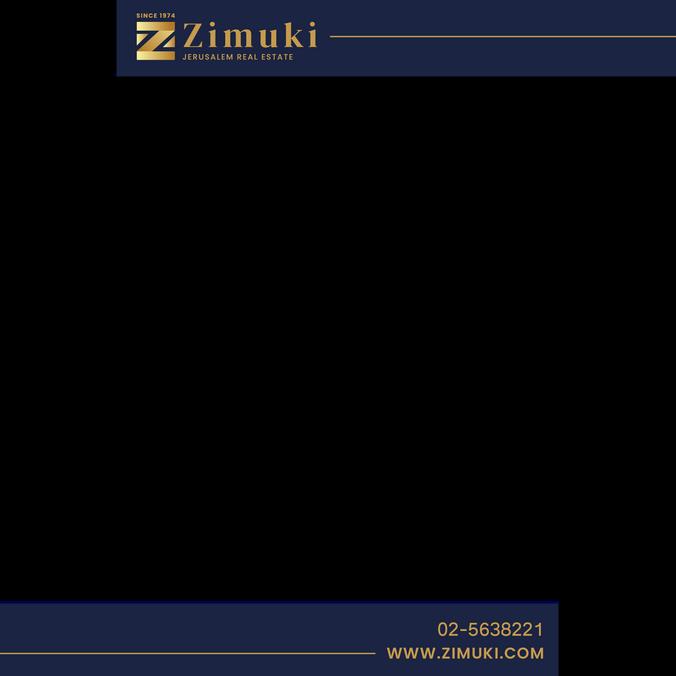

**SALE! PRICE DROP! Makor Chaim, Quadra project. 105 sqm, 3-beds duplex + 25 sqm private garden. Storage + parking. Direct access to buildings pool. 4,780.000 ₪
**SALE! BEST INVESTMENT! Old Katamon, Bruryah St. 3.5 beds, 85 sqm + 30 sqm balconies, 1st floor. The property in an advanced Tama procss for a 4 bed apt. Asking price: 4,150,000 ₪
**SALE! Rechavia, KKL St. exclusive complex. 89 sqm 2 beds apt Including indoor pool, and 24 hr security. Parking and storage. 3,850,000 ₪
**SALE! PRICE DROP! Rechavia, Diskin St 130 sqm 3 beds + 2.5 baths + private parking. Facing city view. Needs renovation. 5,600,000 ₪
**RENTAL! Talbiyeh, 130 sqm penthouse. 3.5-beds, F/F, large terrace, private parking + storage. 13,000 ₪
Ruth Abrahami - 054-8070677




One cold, Lower East Side winter mornings, Jew and non-Jew alike could be seen huddling in the warmth of the small foyer of the beis midrash. Long before card access, key codes, fingerprint and facial recognition gates, someone from the streets could often be seen loitering in the vestibule of Mesivta Tiferes Yerushalayim, right outside the “MTJ” beis medrash. It was sometimes difficult to perceive whether the building was a homeless shelter or the renowned yeshivah of the gadol ha-dor, Rav Moshe Feinstein.
One day, an apparently homeless person came in, found a seat, and proceeded to make himself comfortable while perusing the Daily News in the yeshivah hallway. The next day, one of the administrators devised a plan to keep the vagrants and meshulachim out of the premises and restore a proper ‘religious’ environment. All he needed was the approval of the rosh yeshivah. He approached Reb Moshe and explained how the yeshivah’s reputation and ability to raise funds was suffering from harboring all the unwanted ‘guests’ and loiterers. He then presented his intention for reconfiguring the beis midrash space.
Reb Moshe listened attentively, and in his serene voice, responded: “I understand
the reasoning, and the need to remove them. However, one thing has not yet been explained to me. Once we remove them, where will they go?”
The administrator immediately understood that the honored guests would not be leaving.
Our sedra, as well as the following parshah, Metzora, deal with laws of tumah v’taharah, ritual impurity and purity, including the process and procedure of identifying nega’im, lesions of tzaraas, a ‘spiritual disease’ that could afflict people’s bodies, clothing or homes. If a suspicious blotch appeared on the skin or surface of ones’ belongings, the kohen would examine it to determine if the affliction was tzaraas….
תערצה התסכִּו רֹועב תערצה חרפת חורפ־םאו הארמ־לכִּל וילגר־דעו ושאֹרמ עגנה רֹוע־לכִּ תא ־תא תערצה התסכִּ הנהו ןהכִּה הארו :ןהכִּה יניע …אוה רֹוהט ןבל ךָפה ולכִּ עגנה־תא רהטו ורשב־לכִּ
אמט יחה רשבה ואמטו יחה רשבה־תא ןהכִּה הארו :אוה תערצ אוה
If the eruption spreads out over the skin so that it covers all the skin of the affected person from head to foot, wherever the priest can see — if the priest sees that the eruption has covered the whole body — he shall pronounce as pure the affected person, who is pure from having turned all white. But as soon as un-discolored flesh appears in it, that person shall be impure; when the priest sees the un-discolored flesh, he shall pronounce the person impure. The un-discolored flesh is impure; it is leprosy. (Vayikra, 13:12-15)
Reb Meir Simchah, the “Meshech
Chochmah”, comments on the repetitive emphasis of the Kohen’s “seeing” — הארו. The kohen is charged to diagnose much more than the specific skin affliction; the Torah instructs הארו, “he shall see” the context, the bigger picture surrounding the issue presented to him. He must look at ‘who’ is presenting the issue, ‘when’ are they asking for a diagnosis, and ‘what’ will be the ramifications of his p’sak.
In the diagnosis there are halachic dispensations made for a bride and groom, for a person during Yom tov, and for the furniture and vessels inside a house that may or may not be rendered tamei. All of this, including the timing and backstory of the individuals involved must be seen by the ןהכִּה יניע, the “eyes of the kohen”, the compassionate ‘big picture’, the deeper understanding of the person and the context of the affliction. As author Chuck Klosterman once quipped, “In and of itself, nothing really matters. What ‘matters’ is that nothing is ever in and of itself.”
Big people see the big picture.
The Torah describes another aspect of the purification process:
הארנ עגנכִּ רֹמאל ןהכִּל דיגהו תיבה ול־רׁש א אבו אֹבי םרטב תיבה־תא ונפו ןהכִּה הוצו ׃תיבב יל תיבב רׁש א־לכִּ אמטי אֹ לו עגנה־תא תֹוארל ןהכִּה
׃תיבה־תא תֹוארל ןהכִּה אֹבי ןכִּ רחאו
“The one to whom the house belongs shall come and tell the kohen, saying, ‘Something like a plague has appeared upon my house.’ The kohen shall order the house cleared before he comes to examine the plague, so that nothing in the house may become impure; after that the kohen shall enter to examine the house. (14:35-36)
More than simply a technical purification procedure, Meshech Chochmah explains the process is one of the inner work of tikun ha-midos. One of the seven root causes enumerated by
Chazal for nega’im is miserliness (Kesubos, 5b). The individual suffering from the nega here is described as “the one to whom the house belongs”; he is identified solely by his physical possessions. According to the Gemara (Yomah, 11b) a house might be afflicted with leprosy as a repercussion of the owner refusing to lend his vessels to others, falsely claiming that he does not have them. The stingy behavior results in their possessions being removed from their home for all to see when they are forced to empty them due to leprosy.
Rav Yitzchok Adlerstein further suggests a meaningful lesson based on the Meshech Chochmah’s approach. As the kohen completes the process of cleansing the leperous home, he gathers together a mixture of erez (cedar wood), eizov (hyssop), a strip of crimson wool and the live bird offering, and dips them in the blood and the fresh water, ־לא הזהו םימעפ עבׁש תיבה, “…and he shall sprinkle the house seven times” (14:51). While the pasuk does not explicitly identify which part of the house should be sprinkled, Chazal specify that the sprinkling is directed toward the lintel of the door, as if declaring that, ‘The owner has learned from his mistakes and this door will now remain open to others; a spirit of giving and generosity is replacing the previous miserliness and smallness.’
May we ‘see’ each other with the eyes of the kohen, eyes of chesed, broad vision and deeper understanding. May we learn from our mistakes and afflictions, and open our doors and hallways to guests, and always rejoice in the unstainable purity of our Godly souls.






TO SPONSOR A SHIUR CONTACT
Chana Spivack - 050-229-4951 or donate online: https://www.ouisrael.org/donate/ou-israel-center/
THURSDAY, APRIL 4 - RABBI KAHN’S SHIUR was sponsored by Rena Markowitz on her mother’s yahrzeit ה”ע הרשו ןמלז רואנש תב )הקלא( עבשילא Elisheva (Elke) bat Shneur Zalman v’Sara a”h
TUESDAY, APRIL 9 - REBBETZIN SHIRA SMILES’ SHIUR was sponsored by Bracha Sukenik in loving memory of her father on his 15th Yahrzeit - 13 Nissan ל”ז אליב אדורו באז המלש ןב בד לאינד תמשנ יוליעל
RABBI SNOW’S SHIUR is generously sponsored for this academic year by Scott & Linda Haniford
RABBI SHAI FINKELSTEIN'S SHIUR
Sponsored for this academic year by the Sondhelm and Wertenteil families in memory of Mel David z"l ל"ז הקבר אביוטו ריאמ םהרבא ןב לדנמ םחנמ
RABBI ADLER’S SHIUR
Sponsored for this academic year by the Frist family in memory of their beloved daughter and sister Elisheva Frist a"h - ה"ע ןמלז תב אמיס עבשילא
RABBI GOLDSCHEIDER'S SHIUR
Sponsored for this academic year תמשנ וליעל ל''ז המלש ןב בוט םשו ה''ע םהרבא תב םירמ
REBBETZIN SHIRA SMILES SHIUR
Sponsored for this academic year by Dr. & Mrs. Menachem Marcus in memory of their parents, Rose & Dr. Emanuel Marcus z"l and Rosi & Ernest Strauss z"l
ל"ז סוקרמ השמ ןב יכדרמו ריאמ ףסוי תב לזייר ל"ז סוארטש דוד ןב לאינדו םהרבא תב דומיל
RABBI BREITOWITZ'S TUESDAY SHIUR - MINCHAT CHINUCH
Sponsored for this academic year by Rabbi Refoel & Sharon Auman in memory of their parents Edith & Reiner Auman z”l
ד"יה לאפר תב ה"ע רתסאו ל"ז קודצ ןב הנוי and their son Rabbi Shmuel Eliyahu Auman z"l י"נ
RABBI GOLDIN'S SHIUR
Sponsored for this academic year by Dr. & Mrs. Menachem Marcus in memory of beloved aunts Irma Haas a"h and Hilde Myer a"h
RABBI MANNING'S SHIUR
Sponsored for this academic year תמשנ
RABBI TAUB'S WEEKLY THURSDAY PARSHAT HASHAVUA SHIUR
Sponsored by The Jewish Legacy Foundation
PLEASE NOTE DEADLINES FOR ADVERTISING THROUGH PESACH & YOM HAATZMAUT
Shabbat, April 19-20 (Shabbat Hagadol, Pesach, Acharei) » Thur., April 11
Shabbat, May 10-11 (Kedoshim) » Sun., May 5
Shabbat, May 17-18 (Emor) » Thur. AM, May 9


Shoshana Shoshana Judelman Judelman

R’ Yamin R’ Yamin Goldsmith Goldsmith

R’ Judah R’ Judah Mischel Mischel


Debbie Hirsch Debbie Hirsch

KEYNOTE
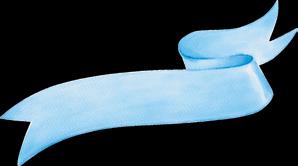
Rachelle Rachelle Fraenkel Fraenkel
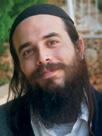
R’ Dovid’l R’ Dovid’l Weinberg Weinberg

Jen Airley Jen Airley
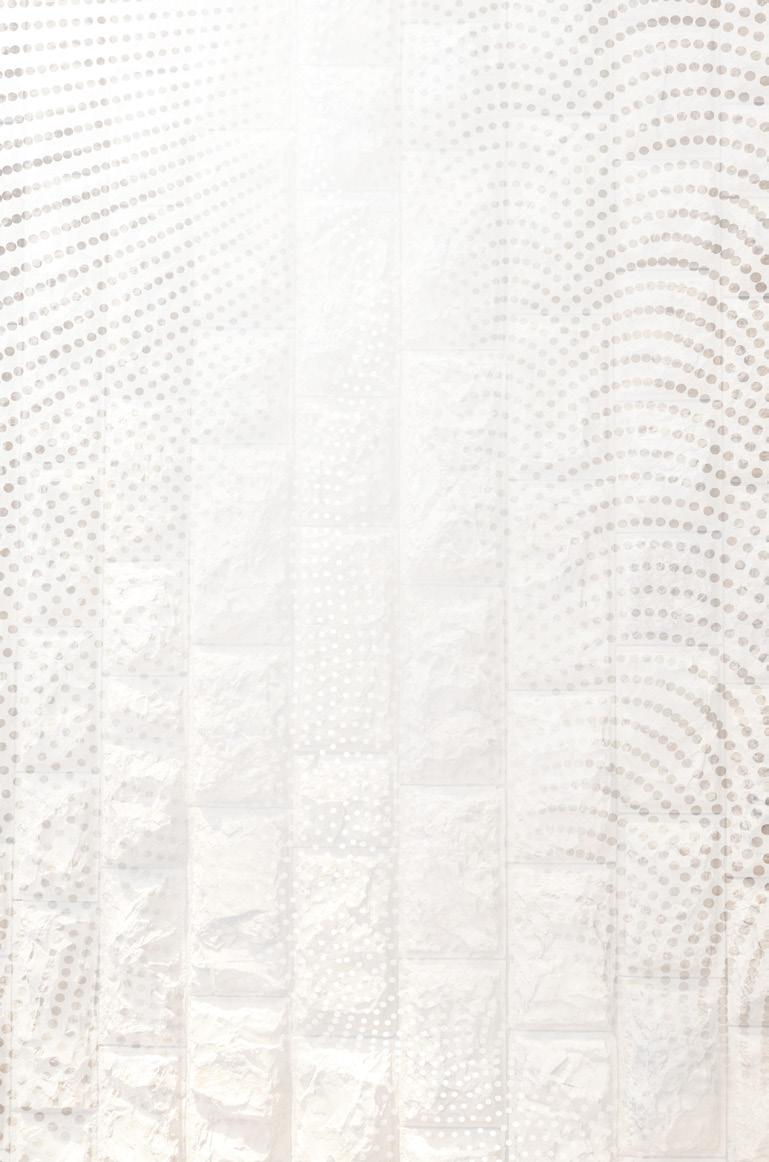
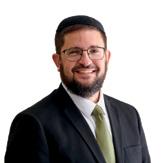
R’ Moshe R’ Moshe Benovitz Benovitz

Marc Marc Fein Fein

Solomon Brothers & Solomon Brothers & Yehuda of Moshav Band Yehuda of Moshav Band



The following prayer has been sent out from the Chief Rabbinate of Israel to be recited at this year’s Seder

The following bracha is said only once a year, during the month of Nissan, on fruit trees in blossom. It is not said on flowering trees that do not bear fruit. Say the bracha ONLY if you are sure that the trees are fruit-bearing. It is not said on fruit trees that already have fruit; only on fruit trees when they display the flower blossoms that precede their fruit. It is preferable to say the bracha on at least two trees. The bracha should be said with a sense of awe, appreciation, admiration, and joy of HaShem and the world He created for us. We specifically acknowledge Him in the presence of fruit trees which delight our senses with their floral displays, even before they provide us with their tasty fruit. We realize that this is an extra-special gift from G-d to us.
Some versions have mEl § M instead of x ¨ a ¨ c
Some add these T’hilim (122 and 128)
K ¦ i « x ¨ r § W ¦ A ,Epi «¥ l § bx Ei ¨ d zFc § nr .K ¥ l ¥ p 'd zi ¥ A , i ¦ l mi ¦ x § n` § A i ¦ Y § g « n ¨ U ,c ¦ e ¨ c § l zFl £ rOd xi ¦ W
D' ¨ i ih § aW mih ¨ a § W El ¨ r m ¨ X ¤ W .e ¨ C § gi D ¨ N d ¨ x § A ª g ¤ W xir § M ,d ¨ iEp § Ad mi « l ¨ WEx § i .mi «¨ l ¨ WEx § i .c ¦ e ¨ C zi ¥ a § l zF` § q ¦ M ,h ¨ R § W ¦ n § l zF` § q ¦ k Ea § W ¨ i d ¨ O «¨ W i ¦ M .'d m ¥ W § l zFcd § l ,l ¥ ` ¨ x § U ¦ i § l zEc ¥ r or « n § l .Ki « ¨ zFp § n § x` § A d ¨ e § lW ,Klig § A mFl ¨ W id § i .Ki « ¨ a £ d Ÿ ` Ei «¨ l § Wi ,mi «¨ l ¨ WEx § i mFl § W El £ `W .K ¨ l aFh d ¨ W § wa £ ` ,Epi « dŸl' ¡ ` 'd ziA or « n § l .K ¨ A mFl ¨ W ` ¨ P d ¨ x § Ac £ ` , i ¨ rx § e ig` aFh § e Li «¤ x § W` ,lk`Ÿz iM Li «¤ RM ri « b § i .ei ¨ k ¨ x § cA KlŸdd ,'d `x
We already know that trees are special - we had TU BISHVAT, the Rosh HaShana for Trees. Think of it this way: Trees provide us with nourishing and delicious fruit. DAYENU! That would be enough to thank HaShem for. And we do, every time we eat a fruit and say BOREI P’RI HA’EITZ.
And when the fruit is the first of the season, we are so excited that we say an additional bracha: SHEHECHEYANU. Many fruits also have a pleasant fragrance. That’s a bonus. An extra gift from G-d for our enjoyment. And we have a bracha for that too: HANOTEIN REI’ACH TOV BAPEIROT. There is also a b'racha for seeing a magnificent forest: SHEKACHA LO B'OLAMO. And that HaShem provided us with a beautiful fragrant display of flowers BEFORE the tree yields its fruitthis is an extra bonus, which we acknowledge once a year with Birkat Ha-Ilanot.
ILAN, ILAN from Taanit 5b-6a: ...To what may this be compared? To a man who was journeying in the desert; he was hungry, weary and thirsty and he lighted upon a tree the fruits of which were sweet, its shade pleasant, and a stream of water flowing beneath it; he ate of its fruits, drank of the water, and rested under its shade.
When he was about to continue his journey, he said: Tree, O Tree, with what shall I bless you? Shall I say to you, ‘May your fruits be sweet’? They are sweet already; that your shade be pleasant? It is already pleasant; that a stream of water may flow beneath you? Lo, a stream of water flows already beneath you; therefore [I say], ‘May it be [God's] will that all the shoots taken from you be like you.’
So also with you. With what shall I bless you? With [the knowledge of the Torah?] You already possess [knowledge of the Torah]. With riches? You have riches already. With children? You have children already. Hence [I say], ‘May it be [God's] will that your offspring be like you.’
I think that I shall never see
A poem as lovely as a tree.
A tree whose hungry mouth is prest Against the earth's sweet flowing breast;
A tree that looks to God all day, And lifts her leafy arms to pray;
A tree that may in summer wear
A nest of robins in her hair;
Upon whose bosom snow has lain;
Who intimately lives with rain.
Poems are made by fools like me, But only God can make a tree.
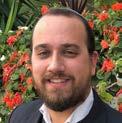 PAGE
BY RABBI EZRA FRIEDMAN Director, The Gustave & Carol Jacobs Center for Kashrut Education
PAGE
BY RABBI EZRA FRIEDMAN Director, The Gustave & Carol Jacobs Center for Kashrut Education
According to Biblical law, food that is completely kosher and cooked by a nonJew is permitted. However, our Sages decreed that such food, even when cooked in kosher utensils, is prohibited for consumption. This prohibition is known as bishul akum. In the coming weeks we will discuss the parameters of this rabbinic prohibition, including the reasons behind the decree, when it applies, and the practical halacha for modern industrial kashrut.
The Torah commands us on that before Pesach we must to remove all chametz from our domain and possession. This is in order not to transgress the prohibition of “bal yera’eh” and “bal yimatzei”, i.e. the commandments not to own chametz on Pesach. In order to take extra measures to ensure one does not transgress possessing chametz on Pesach, our Sages required one to both physically remove the chametz, and to nullify it mentally. The nullification (bitul) removes ownership and relationship with the chametz, including chametz that is not known to the owner, while removing any physical chametz is the more practical form of preventing transgression. The physical removal is in and of itself a mitzvah called “biur chametz” (the mitzvah to destroy chametz). An unfortunate occurrence can be finding chametz in one’s home on Pesach itself. The correct course of action is based on several factors.
CHAMETZ FOUND ON CHOL HAMOED
once Pesach has begun. Authorities dispute whether a bracha should be recited on Chol Hamoed when chametz is being burned. The accepted ruling is not to say a bracha when burning the chametz.
maintain that the decree is based on this issue of closeness to non-Jews that could lead to intermarriage; this is the opinion of most early authorities. However, Rashi and others attribute a different reasoning to the prohibition of bishul akum, which is that non-Jews might mix non-kosher ingredients into the kosher food. In future articles we will discuss whether the parameters of bishul akum are based on both of these reasons or just one. However, it is clear from numerous sources that the danger of intermarriage is the main reason behind the prohibition (See Torat Habayit 3:7).
Food is a very connecting element in every society. That is the basis behind the decree of bishul akum. Our Sages were very concerned about close relationships with non-Jews since intermarriage is a very severe transgression. The prohibition effectively limits Jews and gentiles dining with each other, although there is no specific prohibition against dining with a non-Jew per se. (See Rashi on Avodah Zara 31:b.) Forbidding the non-Jew’s cooking would be enough to create an emotional distance such that families wouldn’t marry into each other.
Rabbeinu Tam (Tosfot Avodah Zara 38:a) and Rambam (Ma’achalot Asurot 17:9)
If chametz, in any amount, is found on Chol Hamoed, one must immediately dispose of the chametz. The chametz must be burned until it is no longer edible. Other forms of disposal such as throwing in a lake are not sufficient
The Gemara in Pesachim (6a) states that someone who finds chametz on Yom Tov is not allowed to move it and must cover it with a utensil or different type of covering. Authorities explain that since chametz is prohibited to eat, possess or benefit from, it is considered muktze (the Rabbinic decree not to move certain objects on Shabbat and Yom Tov) and may not be moved. (See Shulchan Aruch Harav OC 308:9.) Regardless of the prohibition of moving the chametz, our Sages added that it must be covered lest one come to eat it accidently. It is clear from our Sages that once Yom Tov or Shabbat has ended, the chametz should be burned as explained above.
The decree is binding regardless of the reason
Since the transgression of intermarriage was the primary concern behind our Sages’ decree, their goal was to powerfully discourage the possibility of developing emotional connections to non-Jews that could lead to intermarriage either in that generation or the next. Accordingly, early authorities discuss whether the prohibition of bishul akum still applies even in situations where intermarriage is not technically possible. For example, Rashba, in his responsa (1:248), examines the case of food cooked by a priest. Being that Catholic priests do not marry nor do they have children with whom to intermarry, is it permitted to eat food cooked by a priest even though the reason for bishul akum seemingly does not apply to
Early authorities debate whether the Gemara prohibits moving only chametz that was previously nullified (prior to Pesach) or even chametz that was not nullified (such as receiving a package on Pesach, which has chametz). Rashi, Or Zarua, and others rule that the Gemara was only relating to chametz that was nullified before Pesach, which is only a transgression of the Rabbinic prohibition of having edible chametz in one’s domain. However, if someone were to find chametz that was not nullified, he must dispose of it on Yom Tov itself, since every moment, he is transgressing bal yera’eh and bal yimatzei. In contrast, Rambam
Israel is the Center's director.
(Chametz U’matza 2:8) clearly rules that even if the chametz is not nullified, one may not move it on Yom Tov. Many commentators discuss Rambam’s unique position (see Kesef Mishne and Rabbeinu Manoach). Later authorities discuss the issue of removing the chametz. The Vilna Gaon and others rule that it makes no difference whether the chametz was nullified or not, all chametz found on Yom Tov or Shabbat must be covered, and only disposed of on Chol Hamoed. However, the Aruch Hashulchan (OC 446) and others rule that non-nullified chametz must be disposed of even on Yom Tov, while nullified chametz needs to be covered, and burned only on Chol Hamoed. The accepted position is that of the Vilna Gaon.
him? Rashba answers that we have a rule regarding rabbinic decrees: even when the reason does not apply, the prohibition still stands. This is a necessary element in every rabbinic prohibition. Otherwise, Rashba explains, people could rationalize and find reasons why any decree should not apply in their particular situation. Accordingly, Rashba concludes that even food cooked by a Catholic priest has the prohibition of bishul akum. A similar ruling is made by Ramban (Avodah Zara 35:a) regarding non-Jewish royalty who, because of their stature, are prohibited from marrying Jews. He maintains that the fact that the non-Jews are royalty is irrelevant, and that the decree of bishul akum stands regardless of the reason behind it. Taz (YD 112:1) , Shach (YD 112:4) and Pri Megadim (YD 112:1) cite these rulings as axioms of the laws of bishul akum.
Other examples
An option to resolve the issue of finding chametz on Yom Tov or Shabbat is to ask a non-Jew to remove it from one’s domain. A non-Jew is not obligated to refrain from eating chametz or to keep Shabbat laws including muktze. Based on this, it would be an optimal solution to find a non-Jew and have him/her remove the chametz from the premises. Even though some authorities debated this option, it would still seem that it is the optimal solution. In a case where chametz was found in one’s home on Yom Tov, a non-Jew may be asked to dispose of the chametz.
IN SUMMARY:
Later authorities discuss similar cases where the logic behind bishul akum may not apply. Responsa Shevet Kehati (6:273) rules that even food cooked by a non-Jewish child is considered bishul akum, despite the fact that the chances of marriage seem remote. The same is true for food cooked in a faraway country where Jews cannot travel -- bishul akum still applies.
• Even after fastidious preparation, sometimes chametz is found in our possession on Pesach.
In summary:

chametz once Pesach has commenced is burning. No bracha is recited.
gentiles, even if the ingredients and utensils are kosher.
• The consensus among the poskim is if chametz is found on Yom Tov, it should be covered to prevent handling or eating, and it must be burned after the Yom Tov. If a non-Jew is available, it is preferable to ask him/her to dispose of the chametz.
The reason cited by most authorities is the risk of intermarriage.
Even in cases with virtually no risk of intermarriage, the food is still prohibited, including non-Jewish royalty, priests, young children, and non-Jews from distant lands.
• If chametz is found on Chol Hamoed, one must burn it.



In the heart of calm and pastoral BAKAPrivate arab house, 6 rooms, 500m + possibility of building 250m, huge garden, approx. 700m, completely renovated, underfloor heating + a/c, large parking, 5 bathrooms, 5 toilets, green
TALBIYA - FOR RENT: Beautiful & bright apartment, 70m with a sukka balcony & Shabbat elevator, very quiet master bedroom, large living room, fitted & new kitchen, bathroom with bathtub & restroom, free parking for residents
suite, balcony, storage, Shabbat elevator, private parking 3,250,000 NIS
MENDEL 0528980111
7900 NIS - YAELLE 058-7792141
BAKA - 4 Rooms, 6.500 NIS
Our Sages prohibited food cooked by
• The only method for the destruction of
BAKA: New 4 room apartment in a new building, 88m, master suite, storage, Shabbat elevator, private parking, 3,950,000 NIS
RECHAVIA: 4-room
MEKOR HAIM - 4 rooms, 7.990 NIS
BAKA - 3 rooms, 6000 NIS
BAKA - New penthouse, 4 rooms in a small luxurious building with character, alone upstairs, 3rd floor + elevator, 4 orientations, 3 toilets, 2 bathrooms, terrace / sukkah, 70m, parking, store-room
MICHAEL 052-3202488
5450000 NIS MENDEL 052-8980111
MOSHAVA / In a building after TAMA 38, new apartment, 4 rooms, 3rd floor + elevator, balcony/partial sukah, opened sight, 2 bathrooms, calm, parking
MENDEL 052-8980111
HAMOSHAVA GERMANIT - Large beautiful house, 7 rooms, 300m, on 3 levels with elevator, private garden, 175m, beautiful roof terrace, 100m, quiet location pastoral & green, 2 parking spots, 2 large storage rooms, basement, building rights
MICHAEL 052-3202488
BAKA / MEKOR HAIM - 4 rooms, 90m, 2nd floor + elevator, completely renovated, fireplace, a/c, gas heating, very central, close to all amenities
MENDEL 052-8980111
Near Arnona Hatzaira, in a step building, very

Having just celebrated Rosh Chodesh Nisan this past week, we begin to prepare and look ahead to the yom tov of Pesach. It is no coincidence that over these next two Shabbatot leading up to Pesach, we’ll read the parshiyot of Tazria and Metzora, which both focus largely on the spiritual affliction of Tzaarat. Chazal in Masechet Arachin explain that Tzaarat appears as a consequence of slanderous speech.
In contrast, among the many incredible messages inherent in the Seder Layl Pesach experience is the fundamental idea of sacred speech. Speech plays a central role in the entire evening. Our Chazal teach us that we must verbally express and recall the many details and nuances of the redemption from Egypt. Our youngest children traditionally verbalize four questions to begin this dialogue. We then reply to those four questions by stating:
“Avadim HaYinu LeParoh BMitzraim- We were Slaves to Pharaoh in Egypt…and there is a mitzvah incumbent upon each of us to discuss and tell of the redemption from Egypt.”
“Vchol Hamarbeh lesaper b’yetziat mitzrayim — harei zeh meshubach....” — “All who say much in their description of the redemption from Egypt are to be praised….”
In the Haggadah text of the Rambam, we note a slightly different version of this last statement: “Vchol Hamaarich — lesaper b’yetziat mitzrayim, harei zeh meshubach….” — “All who speak extensively in their description of the redemption from Egypt are to be praised….”
How are we to interpret the subtle difference between our more familiar version of this text and that of the Rambam? What lesson might we glean from clarifying the difference between the words hamarbeh (much) and hamaarich (extensive)? Why ultimately do most of us not utilize the Rambam’s version of this important text?
To further amplify these questions, it would seem at first glance that the Haggadah itself seems to see these terms as synonyms, and introduces us to the story of the Sages who gathered together in Bnai Brak and indeed, spent the entire night discussing the Exodus from Egypt.
However, later on in the Haggadah’s discussions of the ten plagues. After listing those ten plagues, we are then introduced to several rabbinic interpretations of those plagues, but the first comments included are those of Rebbe Yehuda.
Unlike the other chachamim mentioned, Rebbe Yehuda doesn’t choose to elaborate extensively about each of the plagues; rather, he teaches us an acronym to recall the plagues in a short, concise, memorable way. Rebbe Yehuda seems to be telling us that the most memorable ideas are clear and succinct- instead of the most verbose or extensive.
What Rebbe Yehuda is teaching us is that we need to become more accustomed to realizing the power of our words. When we are able to share important information in a most direct and clear manner, it is more
likely to be understood, received favorably and remembered by others. When we are not aware of this important concept, our intended messages might get lost or misconstrued.
This very idea of the power of speech is actually an important lesson that is also alluded to in the Exodus story itself. The Chasidic Master Rebbe Moshe Yechiel HaLevi Epstein of Ozarov, zy’a, makes an interesting observation in his commentary on the Haggadah. The Rebbe points out that the prime villain in the Exodus story is not simply called Melech Mitzrayim, the King of Egypt, but also Paroh. The Rebbe taught that the word Paroh is made up of the same Hebrew letters (pay, reish, ayin, and hay) as the words peh ra, a wicked mouth! The Rebbe wrote that inherent in the Jewish People going forth and becoming freed from Egyptian oppression is the need to work to leave behind that power represented by Paroh; that is, to leave behind the use of words for wicked purposes and begin to use our words to speak appropriately and for sacred purposes.
On the Seder night, we recall Yetziat Mitzrayim, and we are mandated to speak with clarity of all the miraculous events that transpired as we went free from Egypt. Each year, as we tell this sacred tale and come together to experience leaving behind Egyptian oppression, may we also merit to emulate this beautiful message introduced by the Rebbe of Ozarov.
These past many months we have seen the damage caused by so many misleading social media posts and news headlines, which have used slanderous language and misled the entire world as to what Israel has endured.
As we begin to look ahead to Layl HaSeder, may we merit to speak with clarity, and may the words of Torah we share on the Seder night inspire us to realize the sacred gift that is speech, and the potential redemptive power inherent in channeling our words to inspire, bring clarity, build unity among us, and heal the entire world.
Walking down King George St. in Jerusalem and want a cold bottle of water?
Come help yourself to a bottle at 52 King George.
In loving memory of Yoni’s wife Tziporah a"h, a true Eishes Chayil, always full of chessed, kindness and laughter, and brought life and strength to so many people, that she touched! She was like Aron, who loved peace and pursued peace.

Yoni thanks Hashem for having the opportunity of having Tziporah in his life, to learn of her caring, patience and happiness, to overcome her challenges. May Tziporah's Neshama be a light onto the world, in a time of darkness, and may her Neshama shine to Gan Eden. Yoni misses Tziporah with tears in his eyes, as Hashem gave him a gift, a crown jewel, now he returns her to Hashem. With thanks and Toda. Love, Yoni
To help refill the supplysend tax deductible donations for Be’er Tziporah a"h Bottled Water Gemach to Chabad of RechaviaRabbi Yisroel Goldberg email
Rabbi@JerusalemChabad.org 02 800-1717
www.JerusalermChabad.org/DonateShekels בוט






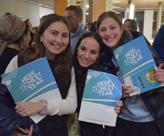
The Israel Calendar is an online platform showcasing virtual and in-person English-speaking programming throughout the country. All events posted on the calendar are designed for Olim seeking to connect with like-minded Anglos while benefiting from English-oriented events.
Hosting an event? Post your events on the calendar and share your program with the expansive Nefesh B'Nefesh community all over Israel.
Translation Tuesdays
Don't let Hebrew get in your way!
Translation Tuesdays goes beyond basic translations. Our dedicated NBN staff offer one-on-one assistance to help you navigate and understand any challenging Hebrew task.



































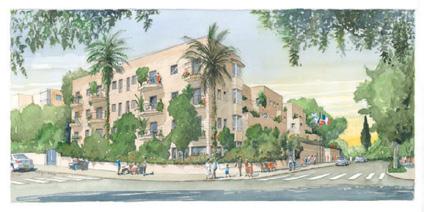








 BY RABBI MOSHE TARAGIN R am, Yeshivat Har Etzion
BY RABBI MOSHE TARAGIN R am, Yeshivat Har Etzion
Our liberation from Mitzrayim wasn’t just a political emancipation of an oppressed nation of slaves. Yetziat Mitzrayim introduced Hashem into a dark pagan world which was lost in theological confusion. For two thousand years humanity assumed that gods were planets, animals, or other forces of nature. They bowed to metal statues and slaughtered humans to stony effigies in delusional worship of self-appointed gods who didn’t answer, and of course, never existed.
Avraham launched a revolution of consciousness proclaiming a one G-d responsible for all reality and Who lies beyond human imagination. His revolution gained considerable regional traction as cultures which lived in his immediate radius began to appreciate Avraham’s moral G-d, who had created everything.
The broader world, beyond Avraham’s immediate vicinity though, hadn’t yet discovered Hashem. When Moshe first demanded our freedom, Pharaoh incredulously asked: “Who is this G-d that you speak and whose demands I should heed?” Pharaoh simply hadn’t heard of Hashem.
Our delivery from Egypt introduced Hashem to the ancient world. Egypt was the cradle of civilization and the messages of Yetziat Mitzrayim spread beyond Egypt to
other empires and cultures. It took the world many centuries to fully adopt monotheism, but Yetziat Mitzrayim was the start of humanity’s long march to monotheism.
Makkot weren’t just “back-breakers” to reduce Egyptian intransigence and to punish them for their crimes. Several makkot delivered important theological messages and introduced basic themes of monotheism.
Prior to educating the Egyptians about monotheism, pagan symbols of worship had to be dismantled. The first two makkot assaulted the Nile-river, the source of Egyptian economic power, which had become a cultural and religious symbol. The plague of dam converted this vibrant and vital waterway into a stinking cesspool of blood and death. Once the flowing river became a stagnant pond it produced frogs and crocodiles rather than edible fish. The Nile-river, once an object of reverence, had been converted into a reeking sewer of death.
Additionally, Egyptians deified their cattle as symbols of fertility and as vital instruments in their all-powerful agricultural sector. The pandemic of dever exterminated all the cattle, reducing Egypt to a slaughter ground of dead and rotting carcasses. An additional religious
symbol had now been humiliated.
Additionally, Egyptians worshipped the sun as the source of life and as a powerful symbol of daily renewal. During the week of choshech the sun was ransacked, and an entire country was shrouded in darkness. One by one they all fell. One by one, Egyptian deities were debunked and debased.
In addition to clearing the stage of Egyptian deities, several makkot introduced basic tenets of monotheism. The dever pandemic lessoned Egypt that Hashem wasn’t physical and had no physical reference point. The pandemic of dever was introduced as attack by the “hand of God”:
הדשב רשא ךָנקמב היוה ’ה די הנה and presumably Egyptians imagined a large divine hand descending from heaven and hauling away their cattle. Yet, dever was completely invisible, teaching the Egyptians that Hashem isn’t physical and cannot be visualized in human terms.
The plague of arov displayed the hidden hand of Hashem within Nature. Unlike other makkot, arov didn’t include any miracles or conversion of any material into a different substance. The jungle naturally teems with wild predators. To protect us, Hashem imposed a delicate boundary between the jungle and the city. After the flood Hashem redesigned the natural order placing the “fear of Man” upon the beasts, preventing them from trampling human cities. The safety and stability of human civilization, so easily taken for granted, is a product of divinely crafted balance. During arov, Hashem simply suspended this balance, removing an invisible boundary. Arov uncovered Hashem’s hidden
hand in Nature, illustrating that:
ץראה ברקב ’ה ינא
Hashem operates within the aretz and within nature. Simply lifting a divinely installed but invisible barrier between the jungle and the city led to violence and chaos.
Barad discredited the popular and powerful notion of dualism. To the ancients, the world seemed divided into different “warring” elements: night and day, life and death, good and evil, water and fire. How could these opposing forces all stem from One being? Unable to imagine Divine unity, they assumed the existence of multiple gods, each of which was responsible for a different force of Nature. To disavow this approach Hashem delivered a hailstorm of barad demonstrating that One God was responsible for both fire and water and, by extension for all the dichotomy and diversity of our world.
The makkot weren’t only punitive but delivered basic lessons of monotheism, introducing Hashem to a world which denied, or was unaware of His presence.
During Yetziat Mitzrayim, the day of Shabbat was a different manner of showcasing Hashem’s presence.
One of the major turning points of geulah occurred on Shabbat, the same day that Hashem halted His original creation. The first korban Pesach was sacrificed on a Wednesday, a day before we departed Egypt. Four days beforehand, goats and sheep were purchased and prepared for sacrifice. This “heretical” act of disrespect to an Egyptian deity would, normally, be punishable by death. On this Shabbat
though, we defied Egyptian law and were protected by Hashem’s hashgacha. This act of insubordination signaled the start of our redemption, providing us with the courage and confidence to follow Hashem into an empty desert.
It also signaled that our redemption served a larger purpose of our representing Hashem in this world. The overlap on that Shabbat between the start of our liberation and the day Hashem rested from creation underscored the fact that we were redeemed to teach the world that Hashem was its Creator. Annually, we commemorate this turning point of geulah, and our national awakening on Shabbat Hagadol, immediately prior to Pesach.
Before that epic Shabbat Hagadol, there was an earlier Shabbat of national awakening. At some stage according to the Midrash, prior to fleeing to Midyan, Moshe petitioned Pharaoh to grant us a day of respite. Pharaoh acceded, reckoning that a day off would only increase the productivity of his slave labor force. Moshe selected the seventh day as our day of rest. The coincidence between our own day of rest and Hashem’s resting confirmed that we were Hashem’s chosen people tasked with teaching the world about creation. By resting specifically on the seventh day we were to testify about divine creation. Repeatedly, during Yetziat Mitzrayim, events on Shabbat highlighted our mission of teaching humanity about Hashem. First, we received a vacation day on Shabbat. A few days prior to redemption we bravely defied Egyptian culture on Shabbat. Seven weeks later, on Shavuot which was also Shabbat,
we received the word of Hashem. If major national milestones occurred on Shabbat, evidently, we had a broader message to deliver. Events on Shabbat are more resonant than events which occur on a weekday. Milestones which occur on Shabbat are deeply resonant and tragedies which occur on Shabbat are deeply symbolic.
On Shabbat, October 7th a vicious attack was launched against our people and our Land. Many of us are processing this pogrom through historical lenses. Having returned to the Land of Israel, we thought that these horrific scenes were relics of our tortured past in galut. We thought we had overcome this struggle, but, evidently, the historical battle over our legitimate claims to Jewish homeland and destiny continues.
There is an additional layer to this battle. The attack of October 7th defiled Hashem’s presence in this world. Any attack against the people of Hashem is an implicit attack against Hashem. But this is a direct assault on Hashem’s presence.
These murderers and rapists speak in the name of God, but they speak of a god who does not exist. God does not desire blood and death and He certainly doesn’t endorse the desecration of human dignity or tzelem Elokim. These homicidal murders have vandalized the face of God in this world. Denying the ways of God is tantamount to denying God himself. Though they appear to be religious they are nothing more than atheists who have blurred Hashem’s presence in our world. They chose our Shabbat as the day of their attack, and they assaulted Shabbat and its testimony of Hashem’s creation.
During the upcoming month of geulah,
undoubtedly, we will view our own struggle through the lenses of past redemptions. It is crucial to frame this struggle not just as historical but also as theological. We are battling for our security, for our people and for our homeland. But we are also battling on behalf of Hashem’s presence in our world. Shabbat was vandalized, and its underlying messages were defaced. We are battling to repair that damage and to fully restore Hashem’s presence to a dark world. On October 7th, Shabbat was the battleground for Hashem’s presence. We will I”yH restore Shabbat’s glory and achieve: ,הנומאו תמא תחונמ ,הבדנו הבהא תחונמ
On a recent Tuesday morning in Jerusalem, parents were feeding their 6-month-old baby and introduced him to tahini for the first time. Within minutes, the baby developed a severe allergic reaction. The infant's parents immediately called emergency services, seeking urgent help.
About six months ago, Gadi, a resident of Ma'alotTarshiha in his 60s, collapsed in his house. His relatives immediately alerted emergency services.
United Hatzalah volunteer EMT Shalom Klein, alerted to the emergency through his proximity alert system, sprang into action as the first responder on the scene. Arriving promptly, Shalom was confronted with a distressing sight - a baby boy with swollen lips and tongue, struggling to breathe, and covered in a worrisome rash.
United Hatzalah volunteer EMT Eran Binyamini arrived at the scene within minutes and, after finding Gadi in a state of cardiac arrest, initiated CPR, attached his defibrillator, and delivered a shock. United Hatzalah volunteer Paramedic Baruch Michaeli also quickly arrived at the scene and administered Advanced Life Support care. After an extensive effort, Gadi thankfully regained full consciousness and was stabilized. He was then transported to the hospital for further treatment.
Recognizing the symptoms as indicative of an anaphylactic shock, the volunteer knew immediate intervention was crucial. Without hesitation, he administered a life-saving EpiPen injection, delivering a dose of epinephrine to counteract the severe allergic reaction. The powerful medication quickly took effect, and the infant's breathing became less labored. The swelling in the lips and tongue began to subside, providing much-needed relief to the child. As the symptoms continued to recede, the EMT monitored his condition while awaiting the arrival of a mobile intensive care ambulance. Several minutes later, the ambulance team arrived and transported the infant to the nearest hospital for further treatment and observation.
Rabbi Taragin’s new book about the war in Israel ‘Dark Clouds Above, Faith Below’ is now available in bookstores, or at:
https://www.amazon.com/dp/ B0CZ7N8ZJB
or: https://kodeshpress.com/product/ dark-clouds-above-faith-below/
Recently, Gadi, who is recovering from the incident, expressed his interest in meeting the volunteers who saved his life. On Wednesday last week, the emotional reunion took place in a restaurant in Ma'alot-Tarshiha. Binyamini and Michaeli told him, “With G-d's assistance, we were able to arrive quickly and provide the necessary lifesaving treatment to you. We are so moved to see you alive and well, and making a full recovery.”
Reflecting on the incident, Shalom emphasized the importance of having an EpiPen readily available.
"It's a great thing I had an EpiPen in my medical kit," he stated. "An EpiPen can save a person's life within minutes and is a huge help for both EMTs and patients."

Gadi kissed the volunteers’ hands and responded, “I am standing on my feet thanks to you; thank you for your dedication and alacrity in saving my life.”



This week’s Haftorah is rarely read, as Parshat Tazria is generally read as part of the double parsha of Tazria-Metzora. Even when it is read, the Haftorah is often Parshat HaChodesh. The last time this Haftorah was read was in 2003 and the next time will be in 2040.
The Haftorah describes two miracles performed by Elisha Hanavi. A man from Shalisha brought him 20 loaves of bread and a sack of grain. The Gemara expounds that while the literal read suggests that there were 20 loaves for 100 people, in fact there was one loaf for 100 people. While Elisha’s servant discouraged the distribution, the loaves fed all 2400 students with leftovers to spare. The narrative then transitions to the story of Naaman, a leprous Aramean general. Upon the advice of a young Jewish captive girl, Naaman seeks healing from Elisha. Initially reluctant to follow Elisha’s instructions to dip in the Jordan River seven times, Naaman eventually complies and finds himself cured. Grateful, he acknowledges Hashem as the ultimate God and wishes to reward Elisha, who humbly refuses.
Why introduce the miraculous healing of Na’aman the Aramean general with the gift of bread that fed Elisha’s students with loaves to spare? The practical answer is that every Haftorah portion must be at least 21 verses. The reading would end off on an unfavorable note if it included the three verses which follow the story of Na’aman’s healing, the greedy advances of Gechazi, Elisha’s servant who sought monetary compensation from Na’aman. Therefore, the additional three verses are appended to the start of the Haftorah highlighting Elisha’s miracle of the loaves.
Perhaps there is a more profound message for us to learn from both miracles shared in our rarely read Haftorah. Skepticism is rooted in doubt and distrust. It breeds inaction and confrontation. By contrast, faith is taking a chance, knowing and trusting that there is an Ultimate Being who is ever watching.
The two stories in our Haftorah message to us that trust is the bedrock of our actions and interactions. The impossible is possible when you believe. Despite the limited loaves, Elisha directs the distribution and the loaves last. Na’aman didn’t believe that the Jordan River was any different than the rivers of Aram and didn’t want to follow Elisha’s directive to dip. Taking a leap of faith takes fortitude, even when our rational thinking tells us not to believe. In our own times there are many reasons to be skeptical. yet we must maintain our faith.


Listen to "Shalom South Florida" every Sunday 16:30-18:00 on www.ShalomSouthFlorida.com
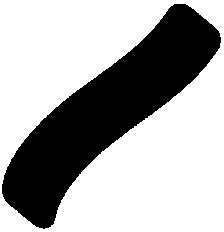

Announcing an Inspirational Jewish Experience to Poland with Rabbi Dr. Aaron Adler
Tuesday, July 16th
– Monday, July 22nd, 2024 (Seven days; Six hotel nights)
Visit: Warsaw, Tarnow, Lublin, Majdanek, Auschwitz, Plashow, Lezajsk, Lancut, Markowa, Tarnow and more… Plus a meaningful Shabbat in Krakow
For more Information: Call: 050 7733117
Email: aaron.adler50@gmail.com
All-inclusive price – including El Al (Sundor) flights - $2250

ENGLISH SPEAKING LAW FIRM
Orit Madar, Adv. Family Law and Mediation Divorce, Child support, Custody Inheritance & Wills
Yariv Madar, Adv. Bodily Injuries, Medical Malpractice Civil Litigation
10 Hillel St , Jerusalem | 36 Dam hamkabim st , Modiin 02-6255592, 050-3202909
Madar@netvision net il


ven though we already concluded our study of Birchat HaMazon in the last article, I recently came across a remarkable story about bentching that I thought would be important to share with you. The story illustrates a beautiful point brought down by the Sefer HaChinuch. The Sefer HaChinuch writes –

When we think of Shabbat, a lot of images and ideas may come to mind, but definitely chicken soup, gefilte fish, cholent, and potato kugel are up there on the list. Why is our Shabbat experience so intrinsically wrapped up with these (and other traditional) foods? Is there any deeper meaning to these delicacies?
Anyone who is careful with their Bentching, his livelihood will be provide for him with respect all of his days
We spent a lot of time in our Birchat Hamazon series discussing the meaning and significance of all of the Brachot of the Bentching. But beyond understanding the deeper meanings, we also need to make sure to be ריהז with our bentching, to be careful how we recite the Bentching, the respect we give to it, and the way we concentrate and focus. If we do our bentching right, we are told that Hashem will reward us with a good livelihood.
Rav Yosef Dov Soloveitchik once explained (Tribute to the Rebbetzin of Talne) that there are two different types of Mesorah (tradition). We often focus on what he calls the “Mussar Avicha”, the passing down of the details of Halacha from one generation to the next. But he says that there is another type of Mesorah (what he calls the “Torat Imecha”), which is equally as important. This is the passing down of the scents and tastes of the mitzvot, teaching our children to connect with and experience the mitzvot. He writes about his own mother – “Most of all, I learned [from her] that Judaism expresses itself not only in
This story is told by Rabbi Yoel Gold and has a profound message for us in our own bentching.
Two years ago, after the tragedy in Meron, a man named Chaim Ginz decided to try and be menachem avel as many of the victims’ families as possible. The first family he visited was the Zacbach family in Bnei Brak, who were mourning their 24 year old son, Menachem Asher. At the shiva house, the family gave out bentchers with the inscription – “The last will/
Do you collect Judaica, art, antiquities?
Your collection holds stories untold.
COLLECTORS...
Every Collection - Every Story - Uniquely Yours
Turn your memories into an unforgettable volume.
Discover more: www.forcollectors.international
Contact: eveblack@forcollectors.international
formal compliance with the law but also in a living experience. She taught me that there is a flavor, a scent, and warmth to mitzvot”.
request (האווצ) of Menachem Asher is to bentch out of a bentcher”. The family explained that at the age of 16, Menachem Asher had taken on the practice of always bentching from a bentcher and never reciting the bentching by heart. He took this commitment very seriously and would never wash and eat bread unless he was absolutely sure there was a bentcher available in the vicinity. Chaim Ginz heard this and decided to take on this practice as well, l’iluy nishmat this young man.
This, then, is the secret to our Shabbos cuisine. While we want to pass on all of the positive and negative detailed mitzvot of Shabbat to our children, we also want to give over the beauty and excitement of Shabbat. One of the ways we do this is through our gefilte fish and cholent.
The Rambam (Hilchot Shabbat 30:7) writes that the Chachamim teach us that we must eat and drink special foods on Shabbat in order to fulfill the command of Oneg Shabbat (enjoying the Shabbat). תאצוהב הברמה לכִּו חבושמ הז ירה םיבוטו
The more one spends financially on Shabbat expenses and puts effort into the preparation of many good foods, the more praiseworthy it is.
Over the generations, many foods have become traditional Shabbat dishes, and these recipes have been passed down for generations. Interestingly, many of these foods became standard Shabbat food based on Halachic and Hashkafic considerations. We will explore a few of these Shabbat foods here:
About a month later, Chaim was feeling pretty stuck. He was having trouble making a living. He was a Sofer and he had just completed a project and was unable to find any more work. Day after day, he would show prospective clients samples of his work but they just kept turning him away. He was feeling very rejected and depressed. One day, he was in a special apartment in Bnei Brak which sofrim use as a place to do their work. He had something to eat and was ready to bentch. He didn’t have a bentcher on him so he was about to bentch by heart. But he remembered his commitment and began to search the apartment from top to bottom. Finally, after many minutes, he located a bentcher hidden under a stack of papers on the top of a bookshelf. He noticed that the bentcher was written in תירושא בתכ, the font used by sofrim. He admired the beauty of the writing and after bentching, he decided to use the bentcher to help him with his own writing. For three hours, he
Chicken Soup – What would a Friday night meal be without chicken soup? The Gemara Berachot 44a states that “a meal without soup cannot be called a meal”. Based on this statement, Chassidic Rebbes insist that there be soup at any fancy meal like a Brit Milah, Bar Mitzvah, or wedding. Since our Shabbat meals are meant to be very special occasions, there is a tradition to include soup in our Shabbat menu.
Gefilte fish – When eating salmon or fillet, one will often encounter bones. Removing these bones (if done incorrectly) can be a violation of the prohibition of Borer (sorting). Gefilte fish was invented in order to circumvent this problem. Fish would be deboned and chopped up before Shabbat and formed into Gefilte fish balls, thereby creating a boneless and borer-less innovation. (Shemirat Shabbat K’hilchata 3:15)
Cholent - The Rama writes (257:8) הוצמו דובכִּמ והז יכִּ ,תבשב ןימח לכִּאיש ידכִּ תבשל ןימטהל תבש גנועו. - There is a mitzvah to insulate on Shabbos so that you can eat hot food (ןימח) on Shabbat and this is considered to be a fulfillment of both Kavod and Oneg Shabbat. He adds that if someone doesn’t do so, there is a suspicion that he might be a Karaite. The Piskei Teshuvot explains that the Karaim took the pasuk ”שא ורעבת אלו" literally and believed that one could not keep a fire burning or insulate from before Shabbat and therefore ate only cold food on Shabbat. One might have thought that it would make sense to take this position and follow the lead of the Karaim. After all, the laws of bishul are very complicated. It would be a lot simpler to just avoid all potential issues and simply eat cold food on Shabbat. But we see that we in fact take the opposite position. There is actually
a special mitzvah to eat hot food on Shabbat (prepared in a permitted manner), testifying to the importance of the Mitzvot of Kavod and Oneg Shabbat. The Piskei Teshuvot concludes –
and therefore our ancestors have always eaten cholent on Shabbat morning, and one should not deviate from this Minhag Yisrael.
Kugel - The Maharil explains that dating back to the times of the Gemara, Jews used to traditionally eat what was known as הדיטשפ, a kugel-like food which was made out of two layers of dough with some sort of filling inside (usually meat). This was a traditional Shabbat food because it resembles the man, which was covered on both sides with dew. (as mentioned in a previous article, this is also the reason we cover our Challa on top and bottom). Shabbat is connected to man because both illustrate our dependence on Hashem for parnassah (sustenance). Nowadays, our lokshen and potato kugels don’t usually have crusts but we keep the tradition nonetheless (and some say that the crusty outer layer can still be considered a crust).
These are just a few examples of the many Ashkenzic traditional Shabbat foods. Go to any Moroccan, Syrian, Yemenite, or Ethiopian Shabbat meal and you will encounter many other Shabbat favorites. It is worthwhile to look into what these traditions are based on and gain a deeper understanding of these special customs that have been passed down for generations.
One last super-important ingredient that would be worthwhile to mention in this article is what is known as the “Shabbat spice”. In Bereishit Rabbah 11:4, the following story is recounted. Rabbi Yehuda HaNasi hosted the
emperor Antoninus for a Shabbat meal and Antoninus enjoyed every bite. He then hosted the Antoninus again for a weekday meal and Antoninus complained that the food did not taste nearly as good as the food at the Shabbat meal. Rabbi Yehuda HaNasi explained that this was because the weekday food was missing a special ingredient – the Shabbat spice.
The Shabbat spice is obviously not an actual spice one can purchase at the local grocery store. But it hints to the idea that as we cook our Shabbat food, we should constantly be ‘spicing up’ our pots with Tefillot that the food should truly enhance the Shabbat atmosphere in our homes, bring kedusha and simcha to our Shabbat meals, and connect our children and guests to the warmth and beauty of tradition, of Torah, and of Yiddishkeit.

THIS CHOL HAMOED ENJOY A THRILLING AND MEANINGFUL ACTIVITY WITH YOUR ENTIRE FAMILY




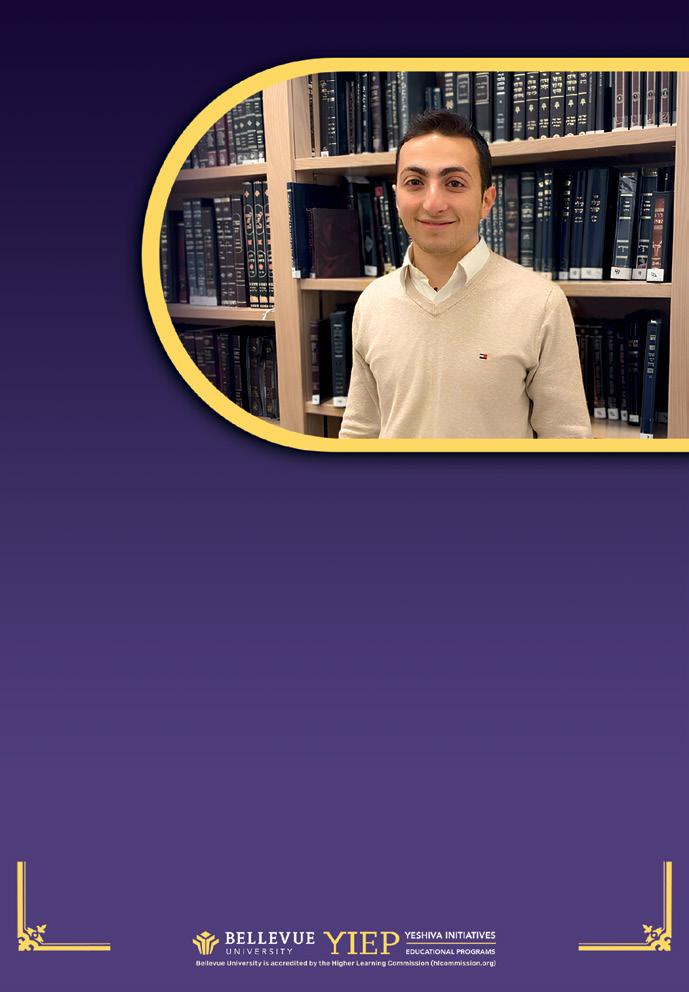

 EDITOR, TORAH TIDBITS
EDITOR, TORAH TIDBITS RAV, THE JERUSALEM SHUL - BAKA, JERUSALEM
EDITOR, TORAH TIDBITS
EDITOR, TORAH TIDBITS RAV, THE JERUSALEM SHUL - BAKA, JERUSALEM
“When a woman has a discharge, her discharge from her flesh being blood, she shall be in a state of separation (be-niddatah) for a seven-day period…” (Leviticus 15:19). Thus begin the laws of niddah, which govern ritual purity within the family. Sometimes these are maligned as strictures which are unkind, or even disparaging, to married women. Rav Avraham Yitzchak Hakohen Kook brilliantly elucidated the rules and regulations to show that they are in fact meant to protect a woman’s honor and maintain her dignity and elegance. Rav Kook began with a general observation on the nature of men and women. A man, he said, has a strong desire, and therefore may attempt to dominate the relationship. In this quest for dominance, the man is liable to inadequately show respect for and validate the feelings of the woman. This sours the possibility of fostering and maintaining a relationship of genuine respect and intimacy. The laws of niddah create a period during which physical intimacy is forbidden, and therefore encourage other forms of intimacy that restore balance to the relationship and are pleasing for the woman.1
1. Pinkasei ha-Re’iyah, vol. 1, pinkas 1, 42.
Another positive outcome of observing niddah law is that the enforced separation increases spouses’ yearning and appreciation for each other, thereby strengthening the bond of marriage. This idea is expressed boldly in the Talmud:
Rabbi Meir would say: Why does the Torah say a niddah [is impure] for seven days? [Otherwise] one would become accustomed to and displeased by her. The Torah [therefore] said let her be impure for seven days, so that she will be as dear to husband as under the wedding canopy.2
This idea of cultivating an impassioned attraction between spouses, said Rav Kook, is particularly important during the years when parents have their hands full with children and work. With each niddah cycle, the enchantment is rekindled so that the attraction never grows stale.3
Aside from the inestimable benefit provided to a relationship, Rav Kook further detailed the positive spiritual effects of observing niddah law. The period of monthly separation frees the couple from the shackles of desire and “lifts the soul” (שפנה תא םמורמ). Observing this lifestyle facilitates focusing on one’s inner life, “increasing fear and love of God.” Not only does this elevate the state of the couple, but it ennobles the entire nation, as generation after generation follows these laws down to the very last detail.4
2. Niddah 31b.
3. Shalev, Nelchah, 53.
4. Ibid., 54.
Although the institution of niddah has a number of positive effects, Rav Kook cautioned that we should not mistake them for the logic behind the mitzvah per se. In other words, the essence of the mitzvah as an expression of the divine will is beyond our ken.5 Overemphasis on practical effects can also pose a danger to observance by undermining our resolute commitment to devar Hashem, the word of God, because it is a decree of God. Rav Kook concretized the peril through the following Talmudic tale:
There was an incident involving a student who learned a great deal of Mishnah and Bible and attended to Torah scholars greatly. Nevertheless, he died in his prime.
His wife would take his tefillin around the synagogue and study halls, saying to them, “It is written in the Torah, ‘For it is your life and the length of your days’ (Deuteronomy 30:20). My husband learned a great deal of Mishnah and Bible and attended to Torah scholars greatly, so why did he die in his prime?” No one would respond to her.
Once I (=the prophet Eliyahu) was hosted by her, and she related that entire event. I said to her, “My daughter, during your niddah days, how did he act toward you?”
She said to me, “God forbid, he would not touch me even with his pinky.”
“During your days of wearing white, how did he act toward you?”
“He would eat, drink, and sleep next to me with bodily contact, but he did not think of conjugal relations.”
I said to her, “Bless the Omnipresent who killed him, for he did not show respect to the Torah. For 5. Mitzvot Re’iyah, Yoreh De’ah, 195:9.
the Torah says, ‘Do not come close to a woman in her niddah impurity’ (Leviticus 18:19).”6
Rav Kook interpreted this to mean that the young man did not give sufficient weight to the divine dimension of the law. The budding Torah scholar found it logical to separate from his wife during the actual menstruation, whereas during the additional days that require careful observation for blood he felt that he did not need to keep his distance. Ritual purity, however, has a divine logic to it, and it must be followed even when it appears irrational.7
Rav Kook had great faith in those coming to build up the land, and he often tried to bring them to Torah observance. In a noteworthy letter, Igeret ha-Taharah, he appealed to the settlers to observe this demanding area of Torah law. With his legendary love and compassion for his fellow Jews, Rav Kook tried to convince them to establish or maintain their commitment to ritual purity, which he believed to be indispensable to fulfilling the destiny of the Jewish people.8[9] He exhorted them:
“Whoever aspires to see the physical and spiritual betterment of the Jewish people, now and for generations to come, should rouse others, without any shame, to be exceedingly meticulous about Torah law concerning the niddah and the proper method of purification.” 9
6. Shabbat 13a–b.
7. Ein Ayah, Shabbat, 1:60.
8. Igeret ha-Taharah, partially reproduced in Shalev, Nelchah, 62–63.
9. Ibid., 64.
Rabbi Goldscheider is the author of the newly published book ‘Torah United’ (OU Press), featuring divrei Torah on the weekly parasha from Rav Kook, Rabbi Solovetichik, and the Chassidic Masters.

standard halachic grounds.
Question: I now eat matzah throughout the year as a replacement for bread as a big part of reducing salt intake, on doctor’s orders. My family minhag I have always kept is to suspend eating matzah from Rosh Chodesh Nisan. May I continue to eat matzah until erev Pesach?
Answer: The Yerushalmi (Pesachim 10:1) forbids eating matzah on Erev Pesach, comparing it to having relations with one’s fiancée before their wedding. One explanation is that when eating matzah is about to be a mitzvah, one should wait to eat it as a mitzvah as opposed to personal desire (see Levush, OC 471:2; Igrot Moshe, Orach Chayim I:155). The Rambam (Chametz U’matzah 6:12) says that it is to make the mitzvah of matzah recognizable. There is a machloket among Rishonim whether this restriction is only at the time of day when it is already forbidden to eat chametz (Rosh, Pesachim 3:7) or is all day (Ramban, Pesachim 15b of Rif’s pages, accepted by the Rama, Orach Chayim 471:2). Poskim disagree regarding the night before (see opinions in Dirshu 471:7). (This is important when Erev Pesach is on Shabbat – see Living the Halachic Process IV, D-15). Before this time, no one forbids eating matzah on
The expansion to well before Pesach comes at the time of early Acharonim. The Sheyarei Knesset Hagedola (471, HBY 3, quoted as an option by several Acharonim) cites a minhag in Constantinople to refrain from eating matzah from Rosh Chodesh Nisan. Rav Moshe Feinstein (Igrot Moshe ibid.) explains the logic as follows. Once one is already supposed to be thinking about Pesach, there is logic to avoid eating matzah before it is a mitzvah. The earliest time is 30 days before Pesach (see Pesachim 6a), which is too early to expect of most people, but it is positive if righteous people accept it upon themselves from Rosh Chodesh or even 30 days.
The Sheyarei Knesset Hagedola seems to understand the rationale differently. He connects the minhag to a minhag the Rama (ibid.) brings to eat a minimum amount of matzah on the first day of Pesach in chutz la’aretz to help go into the second Seder with an appetite for more matzah. This stresses the “experiential” rather than the matzah’s halachic status.
Even on Erev Pesach, a few leniencies might apply to your case. It is agreed that it is only for the type of matzah one can use for the Seder, which excludes at least matzah ashira (egg matzahs) (Shulchan Aruch, OC
Eretz Hemdah, the Institute for Advanced Jewish Studies, Jerusalem, is headed by Rav Yosef Carmel and Rav Moshe Ehrenreich, founded by Rav Shaul Yisraeli, zt”l, to prepare rabbanim and dayanim to serve the National Religious community in the Israel and abroad. Ask the Rabbi is a joint venture of the OU, Eretz Hemdah, and OU Israel’s Torah Tidbits. 471:2). It is a good question whether it applies to matzot whose physical qualities are like matzot for Pesach but were not prepared with the halachot of matzot for Pesach. The Rivash (Shut 402), stressing the halachic side, forbids eating such matzah on Erev Pesach because of the opinions that permit them for the Seder if proper matzot are not available. The experiential approach helps us understand the lenient opinion regarding the “extension time” that those who always eat hand-matzot at the Seder may eat machine matzot before, because they taste different (Piskei Teshuvot 471:4 based on unnamed poskim).
Based on regular halachic rules, there is no need to be machmir on an optional extension of a Rabbinic halacha in the face of important health considerations. (Even if you can find dietary alternatives, few people are good at effectively changing a system that is working.) The problem is that you have been refraining even from matzah that is not for Pesach. While a family minhag is


weaker than the minhag of a place (Pitchei Teshuva, Yoreh Deah 214:5), since you have been following it as an adult (ibid.) and especially if it has been in your family for generations (see Kol Nidrei 75:8), it should be binding on you.
You might draw on the Divrei Yatziv’s (OC 188) logic – it should be permitted to eat matzah due to sickness, because it is not giving in to desires. Even if we will not rely on that logic, we usually assume an originally optional family minhag does not apply when a special strong need exists to not follow it (see Chayei Adam II:127:6). However, it is best to also do hatarat nedarim on the minhag (see Kol Nidrei 76:3).


 INSTITUTE BY RABBI MOSHE BLOOM en.toraland.org.il
INSTITUTE BY RABBI MOSHE BLOOM en.toraland.org.il

In certain scenarios, terumot and ma’aserot (below: T&M) are obligatory and others when considered ownerless (hefker) and therefore exempt. Today we will discuss the status of closed military zones in the Gaza Envelope.
The military does not have ownership of the land, but it can restrict entry to certain areas; ownership of the trees and fruits remains the farmers’. Furthermore, the compensation regulations paid by the state states that farmers are compensated for direct damages (wages) and indirect damages (unharvested yield), but the fruit remains the farmer’s.
Mishnah ( Challah 1:3) states: “These are obligated in challah and exempt from tithes... and [produce that is] ownerless.”
The Yerushalmi (Challah 1:3) explains the verse: “Then the Levite, who has no hereditary portion with you” (Devarim 14:29): “What you have but he does not - you are obligated to give him, but if it is ownerless, your hand and his hand is equivalent regarding it.” That is, giving T&M is obligated only
from produce owned by you and not by the poor or Levite; ownerless produce belongs equally to all. Likewise, the Shulchan Aruch (YD 331:16) states: “Ownerless [produce] is exempt from T&M.”
The Mishnah (Peah 6:1) discusses whether ownerless status can be attached to produce earmarked for the poor only: Beit Shammai hold it can, while Beit Hillel argue “it is not ownerless until it is available equally to the rich and to the poor.” The Yerushalmi explains that Beit Shammai learn from the law of gifts to the poor (matanot aniyim) that produce earmarked for the poor is still considered hefker, while Beit Hillel learn from shemitah that it needs to be available even to the rich to be considered ownerless. The Shulchan Aruch (CM 273:5) follows Beit Hillel’s approach and later authorities follow suit.
In light of the above, if a farmer permits only soldiers to harvest, but if someone would come with a truck to harvest the whole field, he would refuse, halachically it is not considered ownerless. Consequently, soldiers must separate T&M before eating. Similarly, if it
is a closed military zone, even if the army permits harvesting, the farmer still retains ownership of the produce and therefore T&M must be separated.
All of the above is true when we know that the farmer permits soldiers to eat his produce. If not, taking produce is considered theft.
To be continued.









Dear T.R.
Thank you for asking this very relevant and timely question.
Adults as well as children are overwhelmed with emotions when they hear about a terrorist attack. When they become more frequent, the feeling of uncertainty and loss of control can create much anxiety. There are certain guidelines to keep in mind
When you become a parent and are responsible for the care of a child, it can feel overwhelming. There’s a lot of responsibility and many different parenting styles to choose from. Today, there is a strong awareness of how important parenting is and its implications. Modern society values education and the acquisition of parenting skills and techniques. These skills tend to empower parents making them feel secure in their child rearing.
For Sale:
effective skills you can learn to parent your child which are geared to him or her.
the questions they ask. Stay focused. necessary to elaborate or get sidetracked politics or other similar situations. tions should be given in an age appropriate manner. Just like your rules are age priate your discussions should be Having more detailed, graphic conversations is more appropriate with an 18 than old.
Consult with a professional who can help you create a plan specific to your child.
Although schools are well versed in education, they don’t always know how to deal with a child who has a unique set of challenges. Be your child’s advocate. Contact the school, explain your child’s struggle and discuss a game plan. You know your child best.
25 Ben Maimon, 4 rooms, 113m, 2 bathrooms, porch, 1st floor, elevator, 6.2 million NIS
Smadar
050-3114040 // 02-642-4329
smadi_bida@walla.co.il

But what if your child is different? What if your child suffers from chronic health issues or serious focusing problems, hyperactivity, oppositional defiant disorder or any number of mental health problems such as anxiety or depression. Many parents are at a loss. The regular parenting courses don’t fully address these conditions. Many times schools don’t know how to help this child. Other people tend to offer unwanted advice which makes the parent feel more isolated and more like a failure.
Firstly, if your child has significant challenges, then the regular parenting techniques won’t always work.
Try to find specific parenting courses that cater to the needs of your child. There are
Look for a support group for parents who are going through the same challenges. The validation goes a long way. Many communities offer programs and resources that can help you and your child.
It’s important to keep an eye out emotional and physical signs of If your child looks sad, has crying becomes fearful or angry or is experienc ing changes in sleeping and eating he may need extra help processing rent state of events. Be aware of behavioral changes.
Regarding your own emotional important to model emotions in front children. Seeing you express your will allow your child to do the same. being said, there is also a limit. You
Being a parent of a child who has a unique set of challenges is draining. Try to surround yourself with a strong support system. People may judge you and think your child is spoiled, manipulative, unruly or undisciplined when in reality he is just struggling. Some people may give you a knowing smile which will help you get through a challenging day. Just remember that you are raising your child with a different playbook.
Michal Silverstein has a MS in educational psychology and counseling. She facilitates parenting workshops in and around Jerusalem and maintains a private practice.
Feel free to send in any parenting questions you may have to parenting@ouisrael.org (Details will be changed to preserve anonymity).

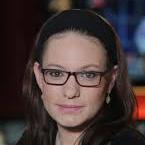

Much excitement has surrounded Emunah Cohen and Neta Lax, the two fresh winners of the annual International Bible Quiz. Yesterday I interviewed them and heard their story.
the first time?' Yet I simply forgot it. I thought afterwards that HaShem caused me to forget the answer in order to remind me that I do not know everything, that I am human and not perfect."
therefore they were never only for Daniel. Not only were the prayers not in vain, but they actually brought our anxiety as to Daniel’s fate to an end, enabling us to move on to the next painful stage of mourning.
the first time?' Yet I simply forgot it. I thought afterwards that HaShem caused me to forget the answer in order to remind me that I do not know everything, that I am human and not perfect."
Much excitement has surrounded Emunah Cohen and Neta Lax, the two fresh winners of the annual International Bible Quiz. Yesterday I interviewed them and heard their story.
It turns out that they studied long hours together and were confident they would be the leading competitors. "We planned on winning together," Emunah revealed. "We thought both of us would answer every question correctly so that we would both be champions, tied for first place.
Captain Daniel Perez z”l Hy”d fell in battle on Simchat Torah. The soldiers under his command saved dozens of people as he continued to fight in his tank for hours. Daniel was considered missing and then presumed captured. Just two weeks ago, he was declared fallen and his family began to sit Shiva. His father Rabbi Doron Perez, Executive Chairman of World Mizrachi, sent the following message to communities worldwide:
It turns out that they studied long hours together and were confident they would be the leading competitors. "We planned on winning together," Emunah revealed. "We thought both of us would answer every question correctly so that we would both be champions, tied for first place.
But in the end Emunah won. "They made a big deal about our big hug after I lost," Neta said. "But it was the easiest thing to share in her happiness. Besides, we were just relieved that the competition was finally over."
“After 163 heart-wrenching days of angst, anxiety, prayers and mitzvot in Daniel’s merit, last week he was declared fallen on Simchat Torah. So many people prayed for him over the past 5 months – were those prayers in vain? Especially since before we began davening for him, he had already been killed.
But in the end Emunah won. "They made a big deal about our big hug after I lost," Neta said. "But it was the easiest thing to share in her happiness. Besides, we were just relieved that the competition was finally over."
In the course of the entire contest, Emunah made only one error. "I knew the answer to the question: 'When did King David cry for
"The more you learn," Neta said, "the easier it gets. When you learn a lot of Tanach (Bible) you simply see how everything connects to your life. I truly felt that what I learned accompanied me wherever I went. It made my heart feel good."
In closing, Neta declared: "The two of us will continue to study the Tanach. There were parts of the Tanach that were not in the material covered by the quiz, and it's important for us to learn them too."
In the course of the entire contest, Emunah made only one error. "I knew the answer to the question: 'When did King David cry for
“Nothing could be further from the truth for two reasons. Although this wasn’t the outcome that we wanted, it gives solace to know that he didn’t suffer. It is a painful loss, but we don’t need to worry about him. That is a relief, and it is because of your tefillot that we were brought this closure.
NETANYA 4 ROOM APT. RENTAL,
NETANYA 4 ROOM APT. RENTAL,
Nitza Blvd, 1 month min. Amazing sea view, kosher, furnished: May, June, July 2023 from September 2023 short or long term APTNETANYA@GMAIL.COM
Nitza Blvd, 1 month min. Amazing sea view, kosher, furnished: May, June, July 2023 from September 2023 short or long term
APTNETANYA@GMAIL.COM
“Additionally, we always davened for Daniel amongst all the hostages. There are so many other hostages – including Matan Shachar ben Anat from Daniel’s tank – and
"The more you learn," Neta said, "the easier it gets. When you learn a lot of Tanach (Bible) you simply see how everything connects to your life. I truly felt that what I learned accompanied me wherever I went. It made my heart feel good."
In closing, Neta declared: "The two of us will continue to study the Tanach. There were parts of the Tanach that were not in the material covered by the quiz, and it's important for us to learn them too."
“Moreover, prayer is, first and foremost, something that changes us. The Hebrew word “to pray,” lehitpalel, is reflexive. It is not only about impacting the world, but first, about impacting ourselves. Once we change ourselves, we can change the world. And we see how that has happened: barriers between people have come down and Am Yisrael has become more united. All the acts of kindness, challah bakes, mitzvot, tefillot, etc. have changed us, bringing us closer to God and to one another — and that lasts forever.
And Emunah had this recommendation: "Study the Bible for 5 minutes every day. Not for school, not for the Bible quiz, but just for how much fun it will be."
And Emunah had this recommendation: "Study the Bible for 5 minutes every day. Not for school, not for the Bible quiz, but just for how much fun it will be."
“May we continue to pray and to feel as one, and in that merit may only good things happen for the Jewish people.”

as most popular female media personality in Israel and by the Jerusalem Post as one of the 50 most influential Jews in the world.
as most popular female media personality in Israel and by the Jerusalem Post as one of the 50 most influential Jews in the world.
Sivan Rahav-Meir is a media personality and lecturer. Married to Yedidya, the mother of five. Lives in Jerusalem, and formerly served as the World Mizrachi Shlicha to North America. Sivan lectures in Israel and overseas about the media, Judaism, Zionism and new media. She was voted by Globes newspaper as most popular female media personality in Israel and by the Jerusalem Post as one of the 50 most influential Jews in the world.


attribute of Emet, truth in Yaakov. And above all, G-d valued their commitment to passing on these valued attributes to their descendants. That is why He ‘chose us from all the nations.’



NORTH NETANYA - AMAZING LOCATION , AMAZING BUILDING
SEA VIEWS - 4 Bedrooms From 4 25M NIS
132 sqm apt + 19 sqm Porch
SHABBAT ELEVATORS + CENTRAL AC UNIT + PARKING

CENTRAL NETANYA - GREAT VIEWS
SEA VIEWS - 4 Bedrooms From 3 9M NIS
131 sqm apt + 17 sqm Porch SHABBAT


Our chosenness has nothing to do with high intelligence. It has to do with Midot, character traits. At the end of the day, this is what we are all about. The central challenge to us is working on our personal Midot. The Vilna Gaon said that the reason we are here in this world is to improve a Midah, which we have thus far not perfected. Therefore, we must always work on this, for if we do not improve our Midot while we are here, what is the purpose of life? We must instill this concept in our children and grandchildren that bringing home a Report Card with all “A’s” on academic subjects will bring them a reward but getting all “A’s” on the Midot side will bring even a greater reward.

3


One person’s trash is another person’s treasure… We buy old sifrei kodesh, judaica gold, silver, coins, collectables, banknotes, antiques and more


Dorot Rishonim #3, Jerusalem
Tel: 02 563-7155
Website: SherlockSHats.com






is reluctant to send Yishmael away and Yitzchak seeks reconciliation with Yishmael and seeks to bless Esav.
NACHI REALTY 054-461-3943
Ground floor completely accessible, spacious & airy, 4 rooms, 10m mirpeset, parking, tons of potential, 2 entrances so the 3rd bedroom can be used as a clinic /office or studio unit. 3.97m shekel
Rashba street, 2 rooms, 50m, 1.5 bathrooms, mirpeset, small building, 12 stairs up. available from April.
30m studio on Bustani street, ground floor, small garden, for independent people over 55. 3500nis/month incl va'ad bayit & heat.
Flying Soon?
Travel with Confidence Medical Insurance
Choose from multiple options
1unitravel.brokersnexus.com





Smart Sky specializes in advancedcustom shading systems suitable for all seasons.
Our systems offer a variety of enclosing solutions for expanding your living areas, balconies, pools, shuls and businesses.
Smart Sky's professional Jewish installation team use only optimum quality and high grade imported materials.
This time do it the way!
Aliya (25:1-11) Avraham marries Keturah; they have 6 sons. All that Avraham has goes to Yitzchak; these are sent eastward with gifts. Avraham dies at age 175; he is buried by Yitzchak and Yishmael in Ma’arat Hamachpelah. Yitzchak is blessed by G-d: he lives in Beer L’chai Roi. The transition from Avraham to Yitzchak is complete. While G-d has been a silent partner in this parsha, here He completes the generational transfer – He blesses Yitzchak. The Jewish people will be Yitzchak and not Yishmael.
1UniSim - Sims for USA and Worldwide
Starting at $40 sales@1unisim.com
Call 077-400-3199 or USA 718-715-0001
• STYLE & COMFORT
• MANY COLORS & DESIGNS
• FAST DELIVERY

When Avraham addresses the people of Cheit, trying to “Ger V’Toshav Anochi Eimachem” (23:4) “A Stranger and This seems to be a contradiction. If one is a stranger than is no longer a stranger. What did Avraham mean?
WWW.FOLDEES.CO.IL | 058-707-8181
KNOW WHAT TO ANSWER
FREE COUNTER-MISSIONARY
Videos
• Parsha Insights
• Booklets • Counseling

The Magid of Dubno (Jacob ben Wolf Kranz 1741-1804) explains this tense situation in order to, both, state his truth and be said, on the one hand, “I am a Resident’ due to G-d’s promise need your agreement to purchase a plot. In other words, Avraham “strangers”, while they understood him as saying that “they”
The peace was kept, and Avraham remained true to his ideals. Shabbat Shalom
Rabbi Bentzion Kravitz • rabbikravitz@JewsforJudaism.org
Aliya (25:12-18) The generations of Yishmael are enumerated. Yishmael dies. His descendants dwell from Egypt to Assyria. Yishmael’s story is brief. He has numerous and powerful offspring. The brevity is interested the Jewish length. echoes tions woman and began father’s that his icant the Jerusalem

 BY TEENS NCSY ISRAEL
BY TEENS NCSY ISRAEL

After being diagnosed with his spiritual disease, presumably for speaking Lashon Hara, the Torah seems to subject the Metzora to solitary confinement. הנחמל ץוחמ בשי דדב" "ובשומ. “He shall sit alone; outside the camp shall be his dwelling place.”
At first glance, it seems as if the Metzora is meant to be secluded entirely, maybe even from other Metzoraim; however, there are two issues with this approach: Firstly, most of the Rishonim interpret the pasuk to mean that he shall be alone from only other types of contaminated people (like a Zav or Tamei Meit) but is allowed to chill with his fellow lepers. Secondly, if he is meant to seclude himself when he interacts improperly, how does Moed Katan 7b state that the Sages do not give a

ruling of Tzaraat during a Chatan’s Sheva Brachot or when he is doing Aliyah L’Regel? Wouldn’t it be dangerous to leave him out in society at such a time during a big social gathering?
The Torah is teaching us a profound lesson about rehabilitation; it has two crucial stages. Contemplation of one’s flaws is essential to spiritual growth. By being surrounded by people with the same issues as him, it is inevitable that he will either realize his own problem by seeing it in others or form a support group amongst his new peers. He will have time to contemplate his actions until he learns how he can interact with his friends and community properly through his time surrounded by people dealing with the same struggle. The most crucial stage is the actualization of the change: when the Metzora has an opportunity to interact with society, whether it be at a large gathering like a Sheva Brachot or in his own new secluded hub of friends, the Chachamim gave the Metzora another chance to redefine himself, to socialize in the proper way. Specifically in these places are his biggest tests and his chance to rise back up from his lowly state. The Torah does not want us to be alone in our individual struggles. Rather, in every challenge we find ourselves we should surround ourselves with a support group, not give up, and give ourselves a chance to shine again.
 Ruth Derfler 11th Grade Elazar
Ruth Derfler 11th Grade Elazar
This week’s parsha talks about two main subjects: tzara’at and halachot regarding childbirth. Why are these completely different things in the same parsha? How are they connected?
One of the main ideas of Jewish philosophy is that if a person sins, the halachic punishments aren’t meant to harm them for the harm they caused, rather to benefit that person. How?! Suffering caused by punishment cleanses the המשנ.
In most cases, the good in a punishment isn’t apparent, but with tzara’at, it’s obvious. When a person is declared אמט and put in total isolation, they will learn not to speak ערה ןושל because they have no one to speak to.
From cases of people with tzara’at, we learn that all of the Torah’s ‘punishments’ are meant to help the sufferer correct their wrongdoings and start a new life without having to worry about old mistakes.
The parsha is called Tazria (hinting at conception and birth) to teach us that all punishments from the Torah are intended to help a person have a spiritual “rebirth” and correct their ways.
(Based on Likutei Sichos vol. 22 pp. 70-73 and paraphrased from Rav Menachem Mendel Schneerson’s teachings)















The right place to be in life: Mevo Modi’in
A countryside duplex with a private forest, midway between Tel Aviv and Jerusalem


Starting from NIS 5.1 million
Meet Tazpit-Mevo Modi’in, the project that puts you in the right place in life. Midway between Jerusalem and Tel-Aviv, with access to all worlds, whether you want a cup of co ee overlooking the forest, to ride a bike in your own backyard, the best restaurants ten-minutes away…everything is at your ngertips. So, if you are at a good place in your life, now is the time to move to the right location. Looking forward to your call: 054-5797396 | *6957
your Stocks! Free your appreciated stocks from capital gains tax with JGive Platinum's digital donor-advised fund (DAF). Donate and receive both a full exemption and up to a 35% tax credit.





The above should not be misconstrued as tax advice, legal advice, a recommendation, or an opinion regarding the advisability of participating in financial products of any kind or type, including but not limited to participation in donor-advised funds (DAF). The above is not meant to be a substitute for personal advice tailored to the client's needs, nor does it take the place of advice given by qualified professionals.